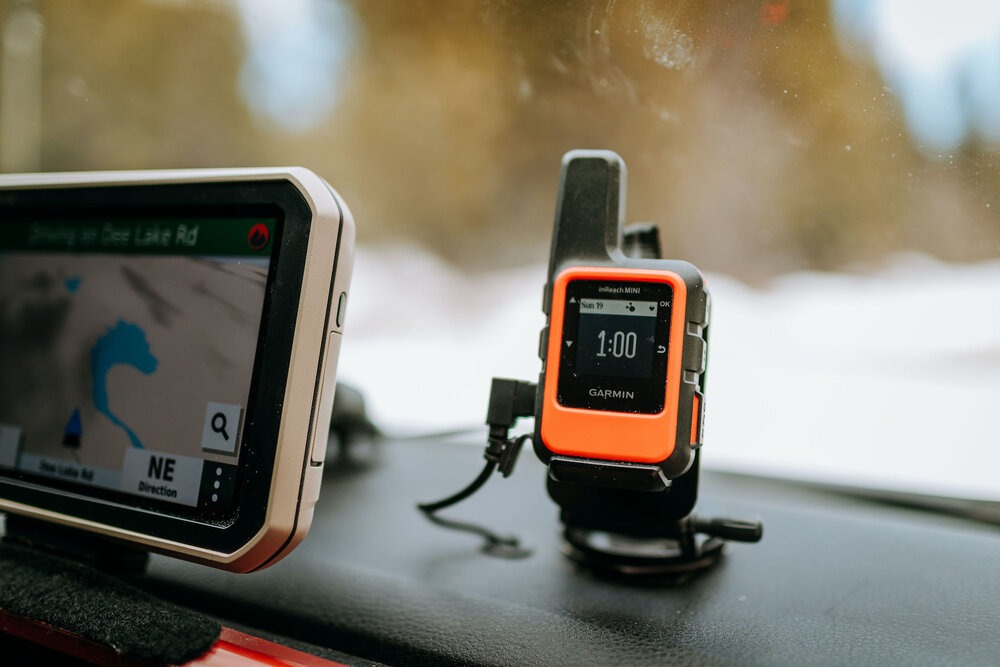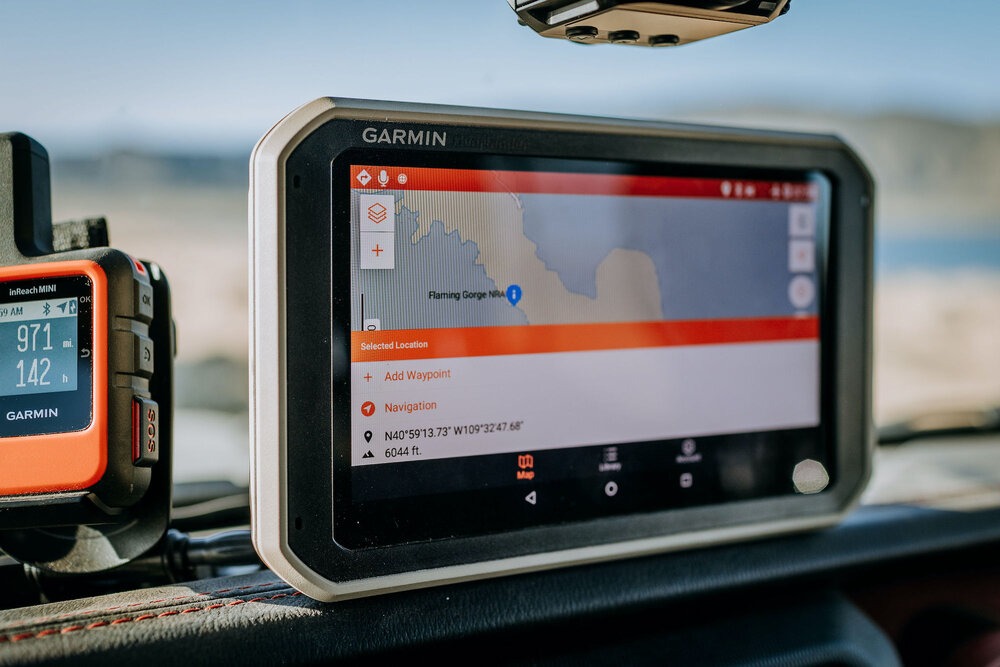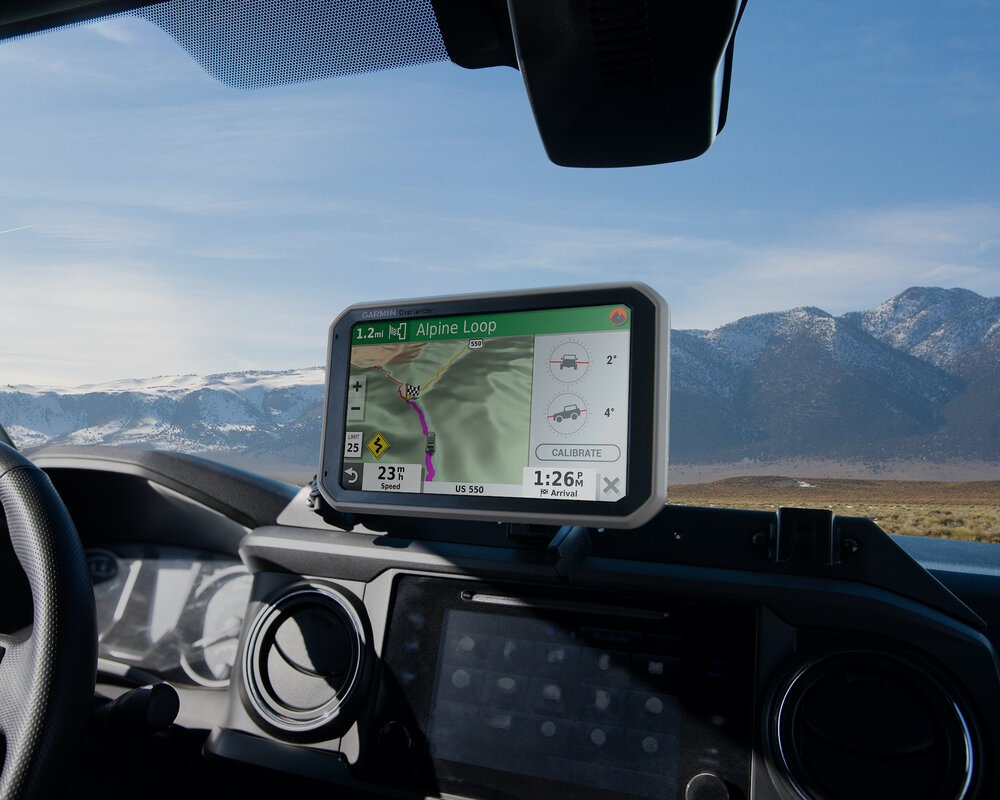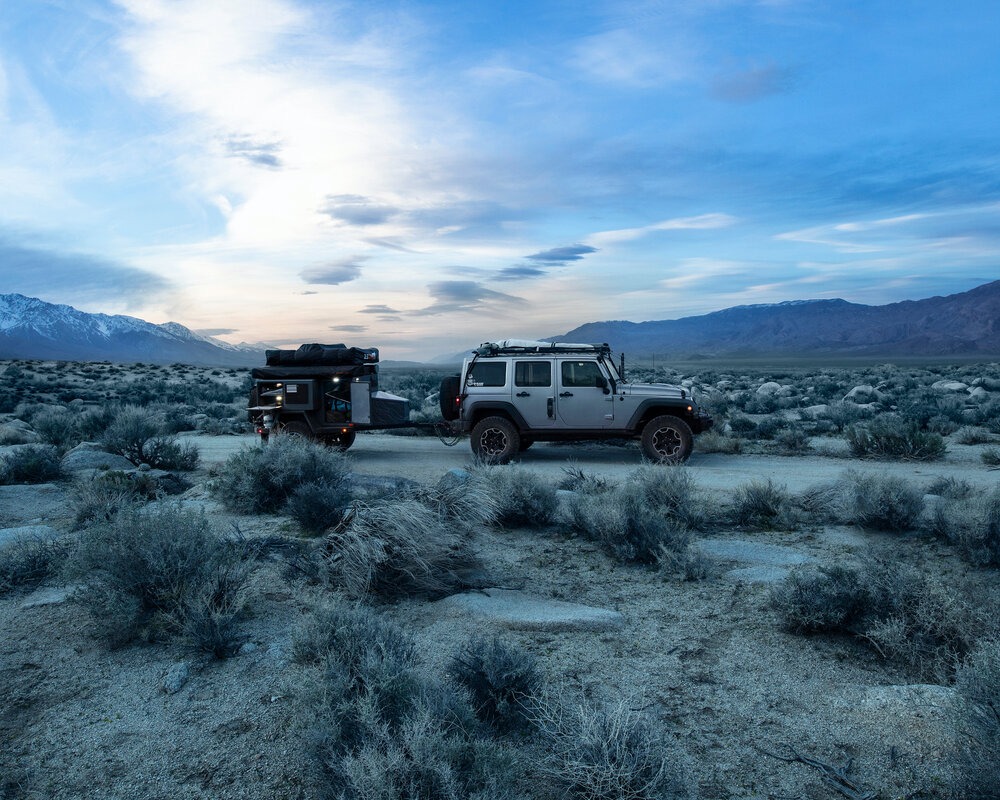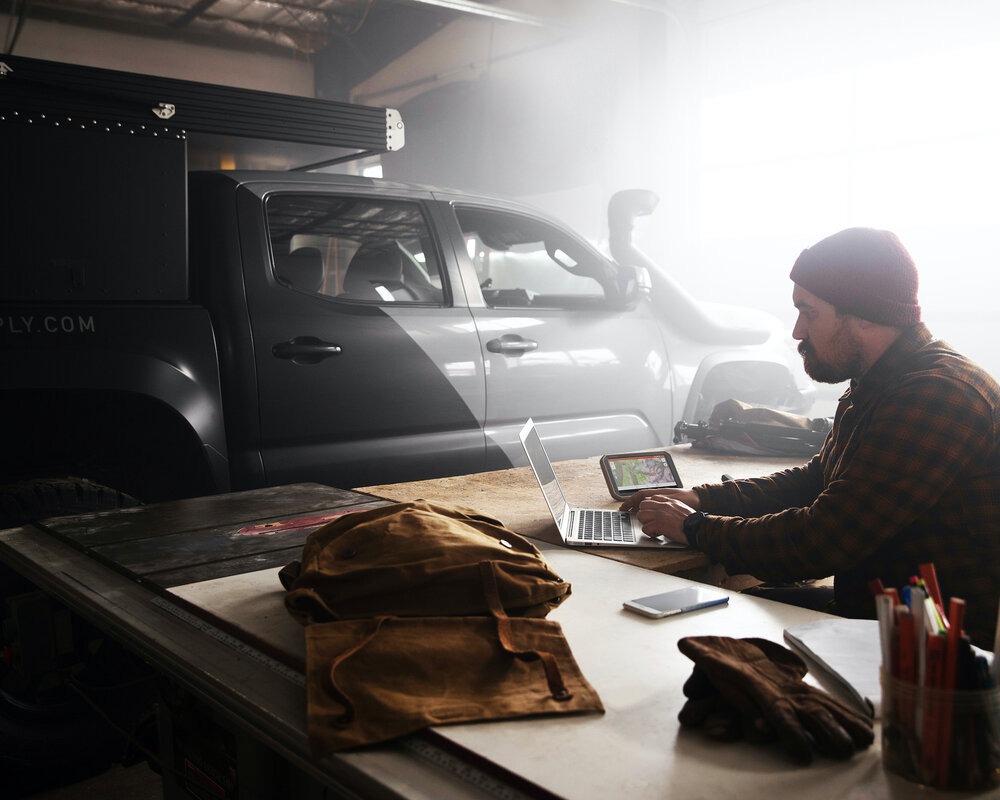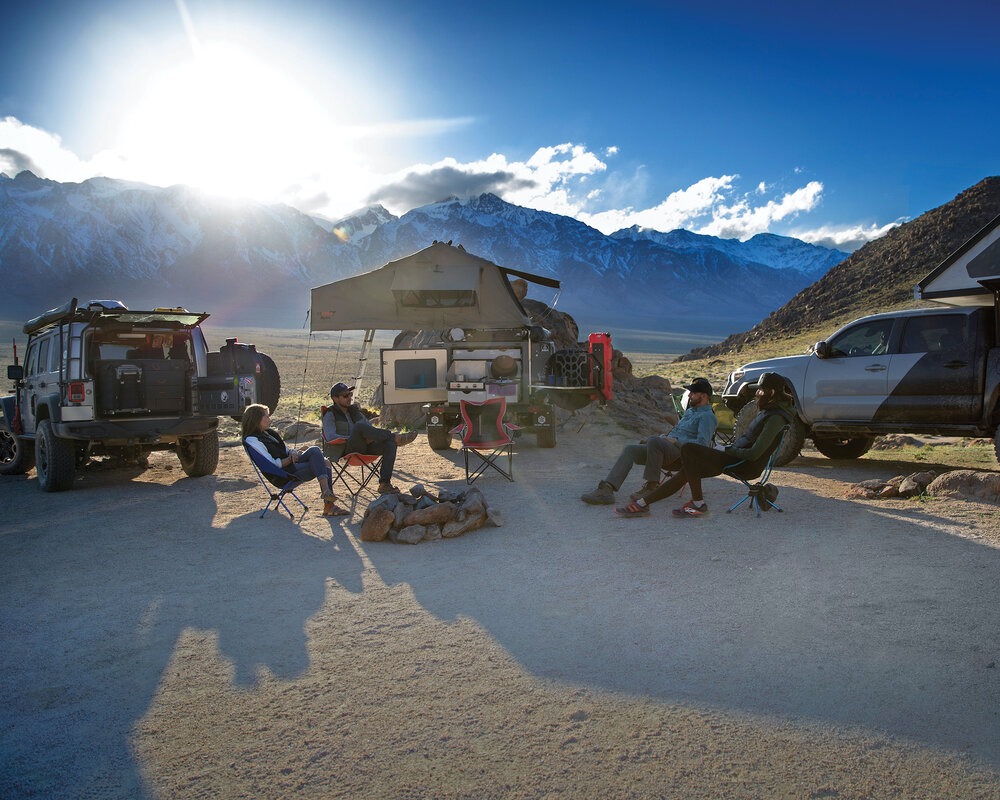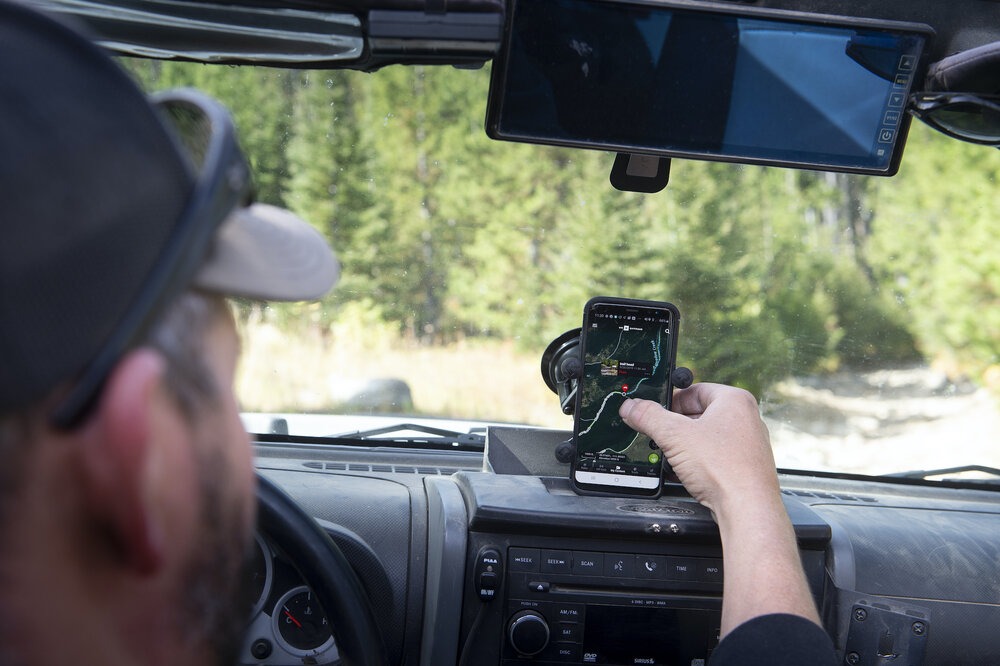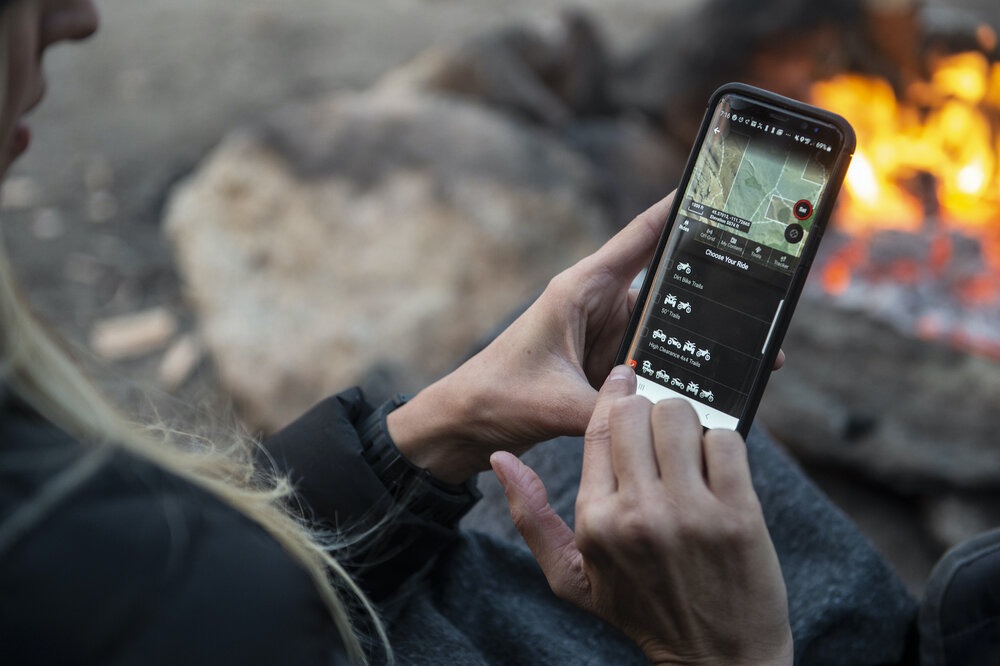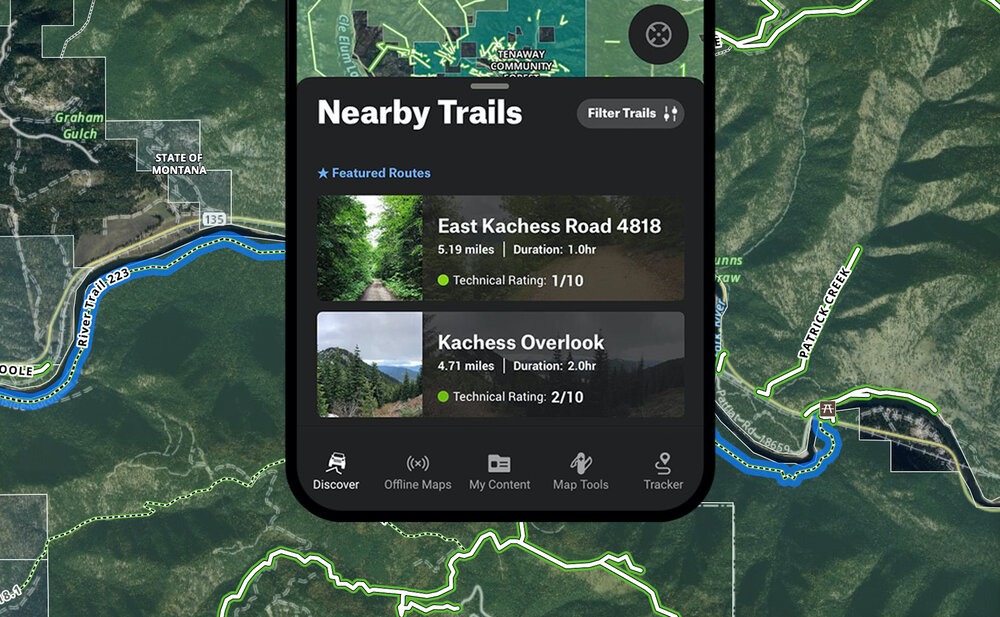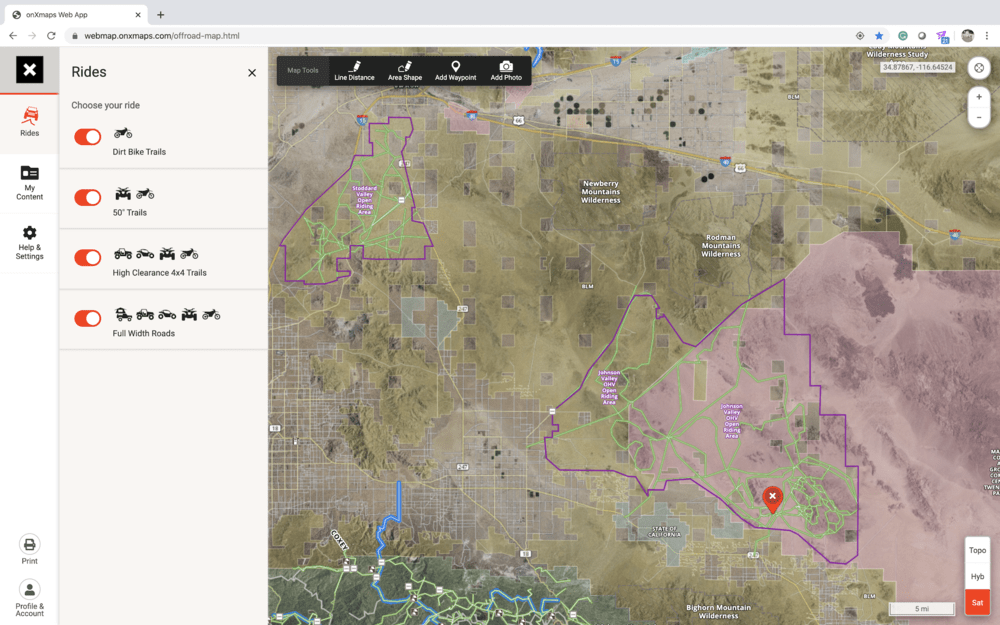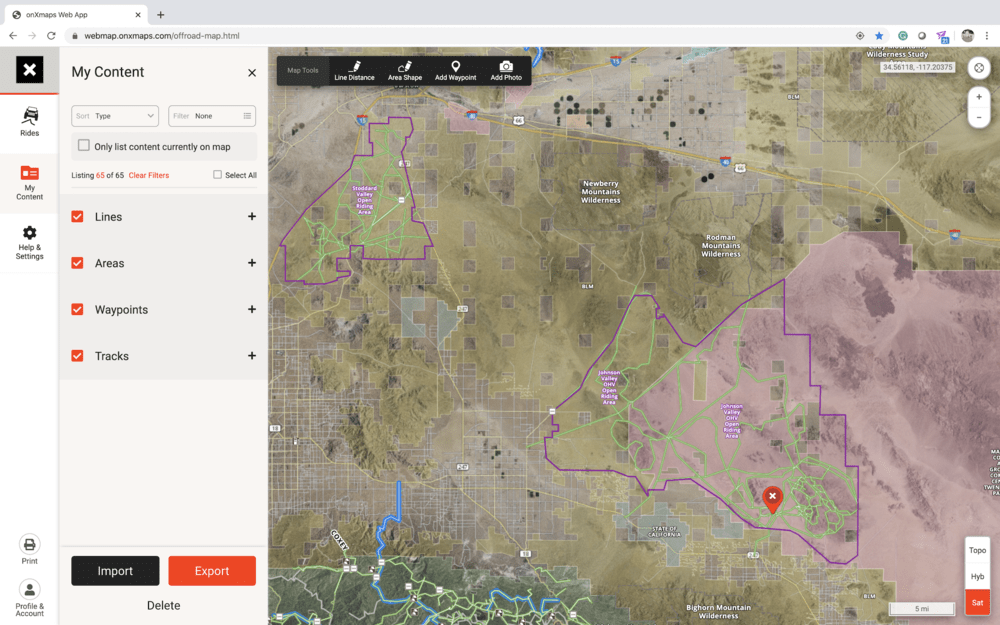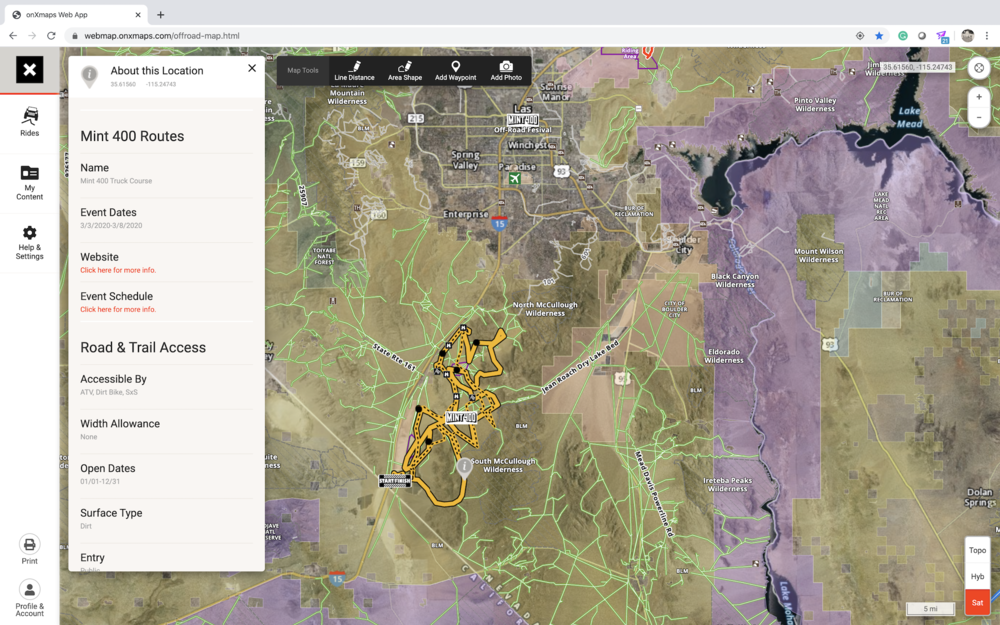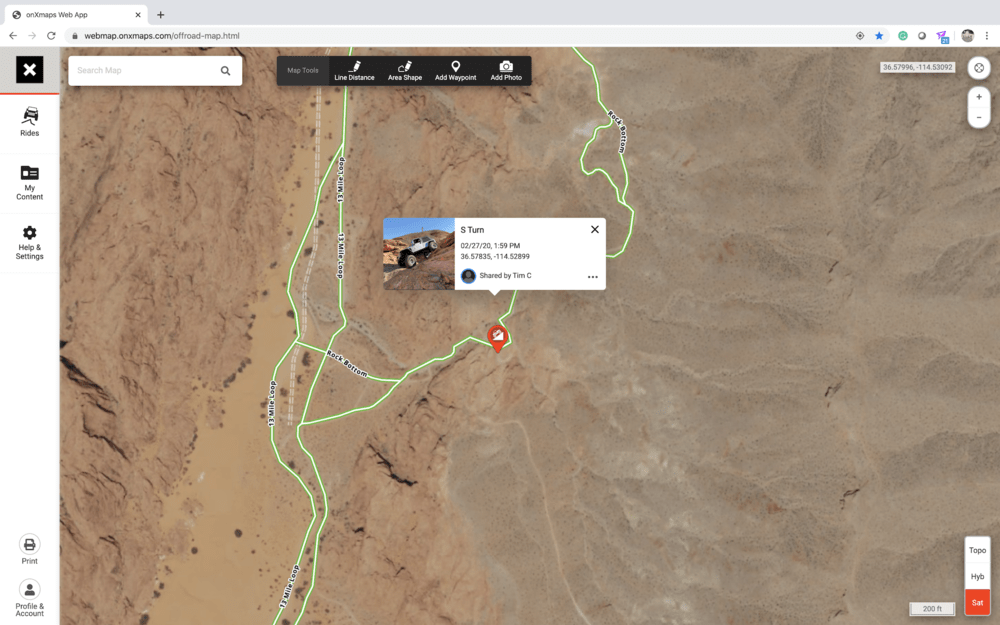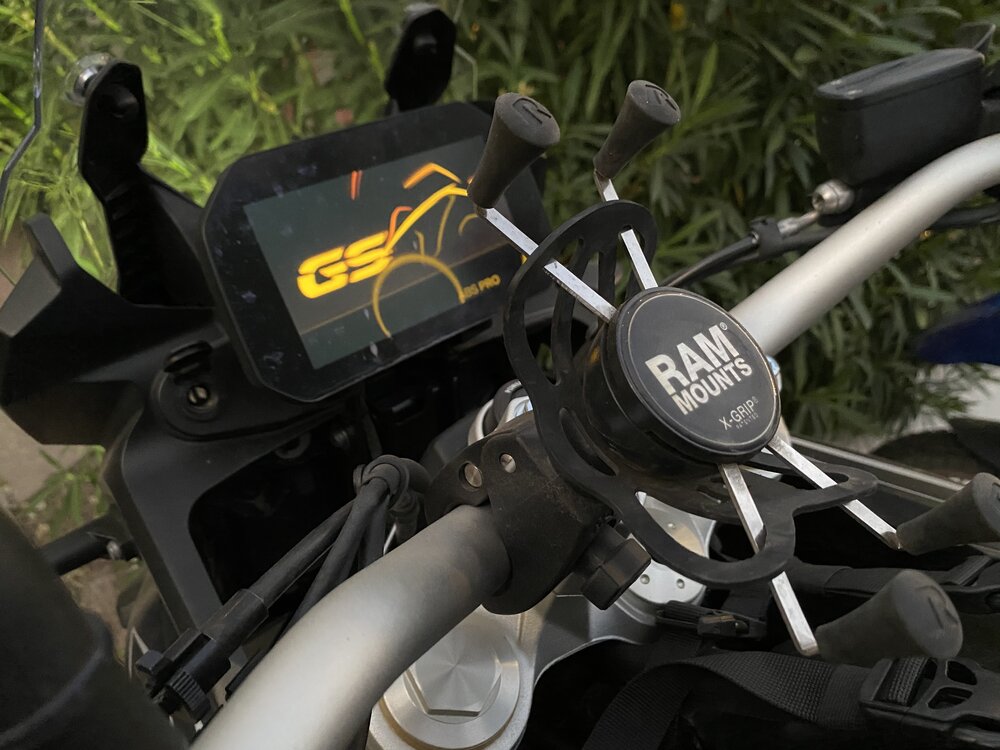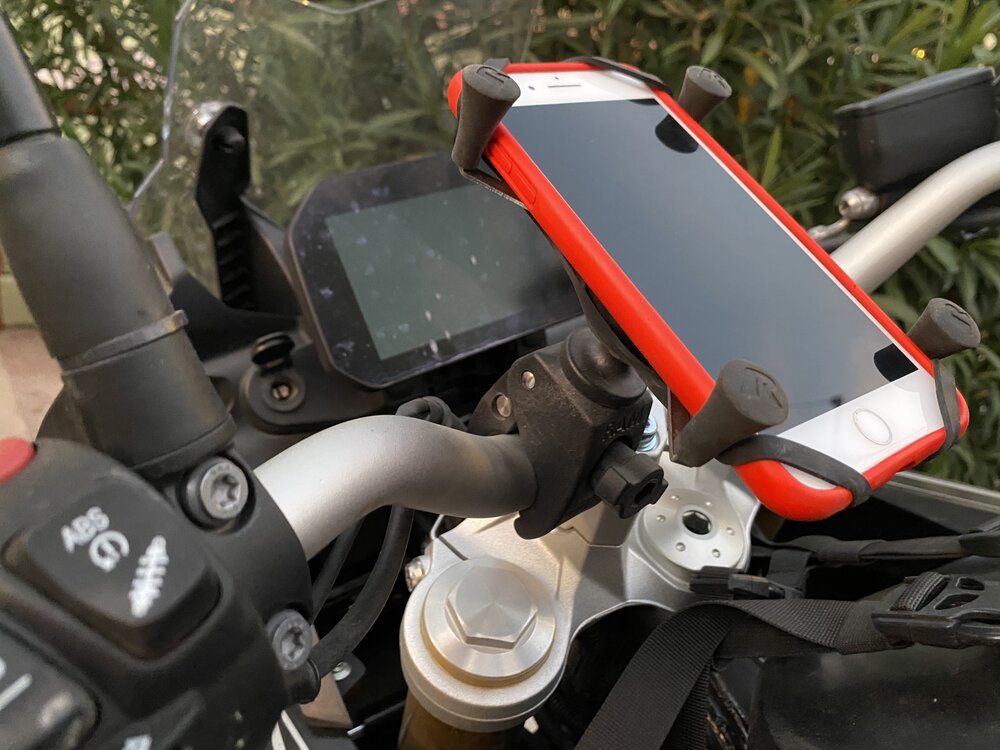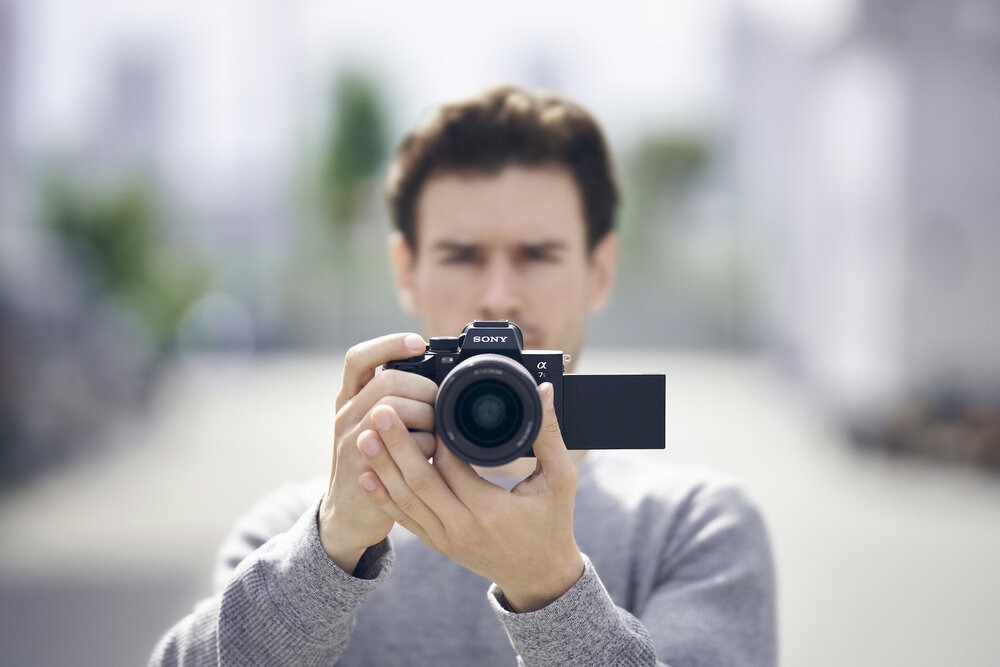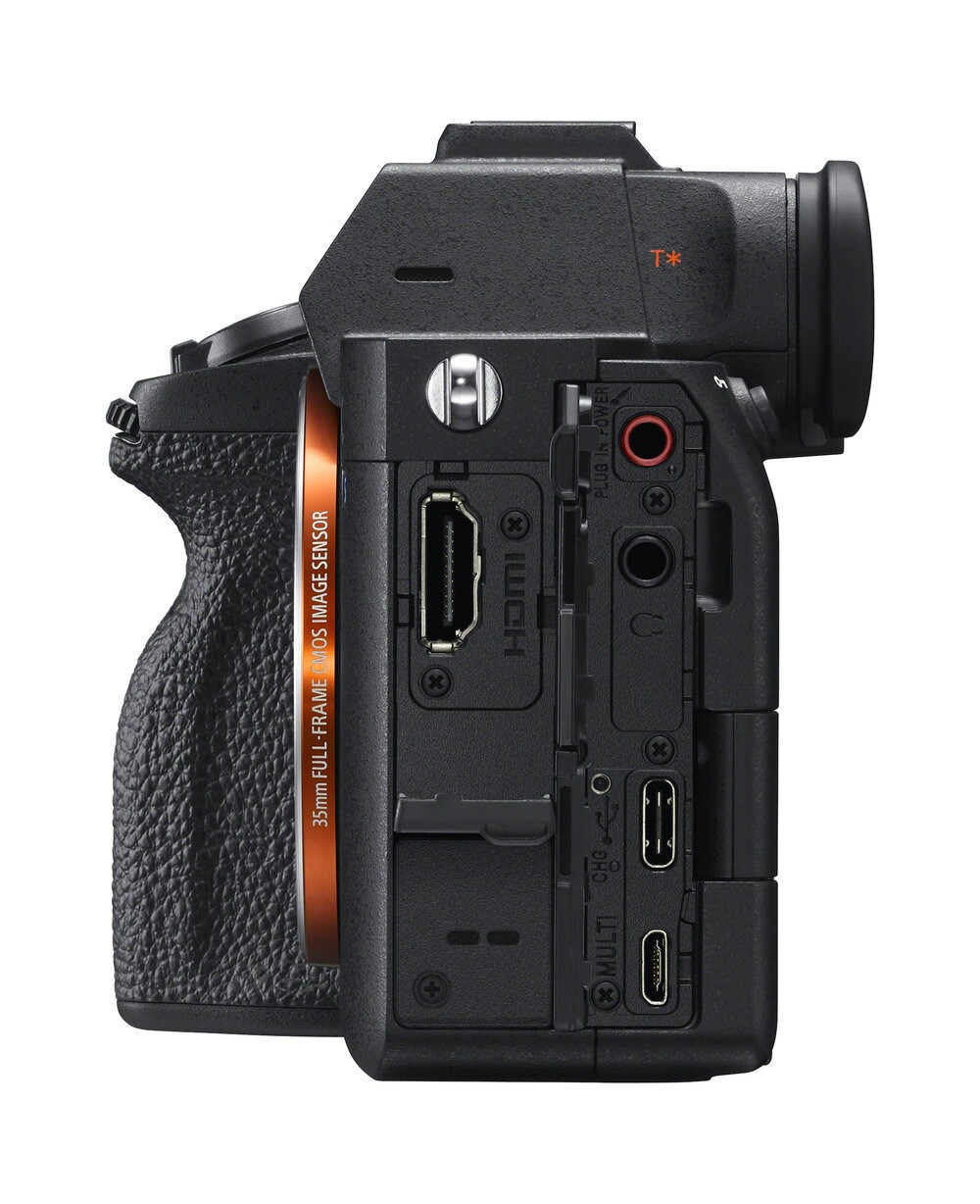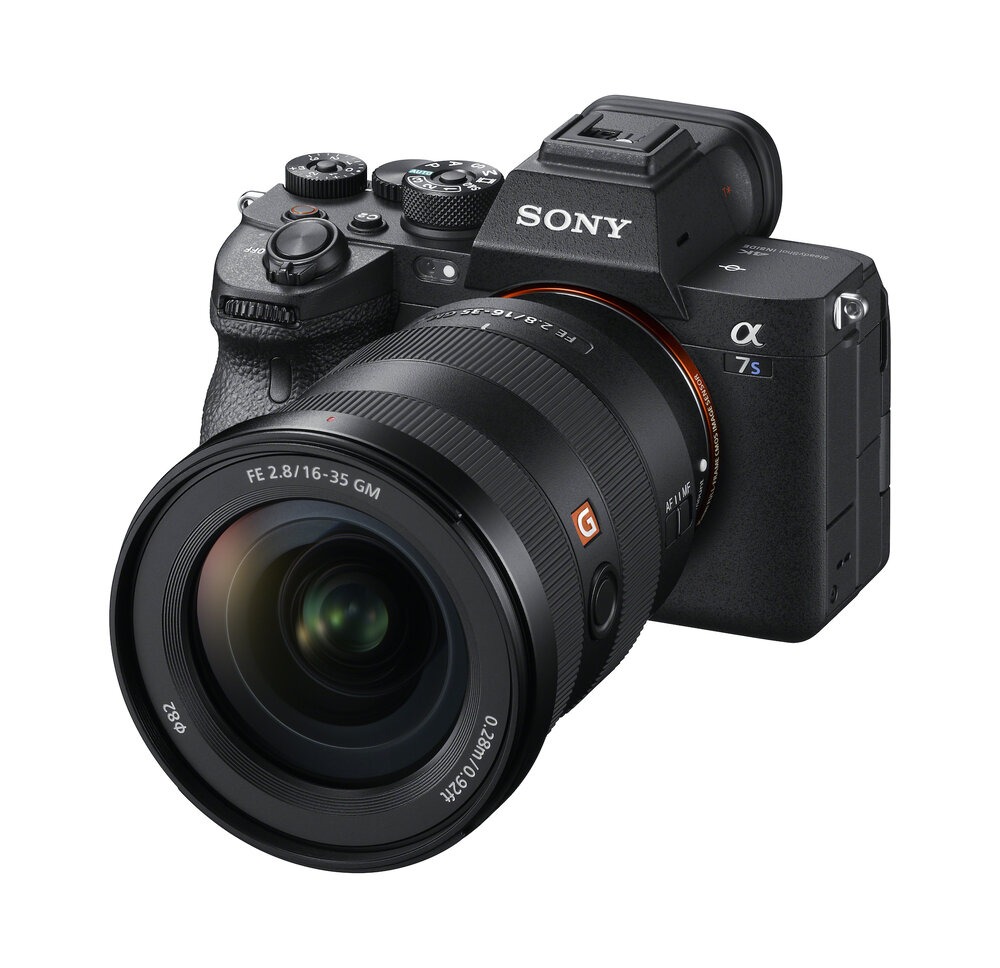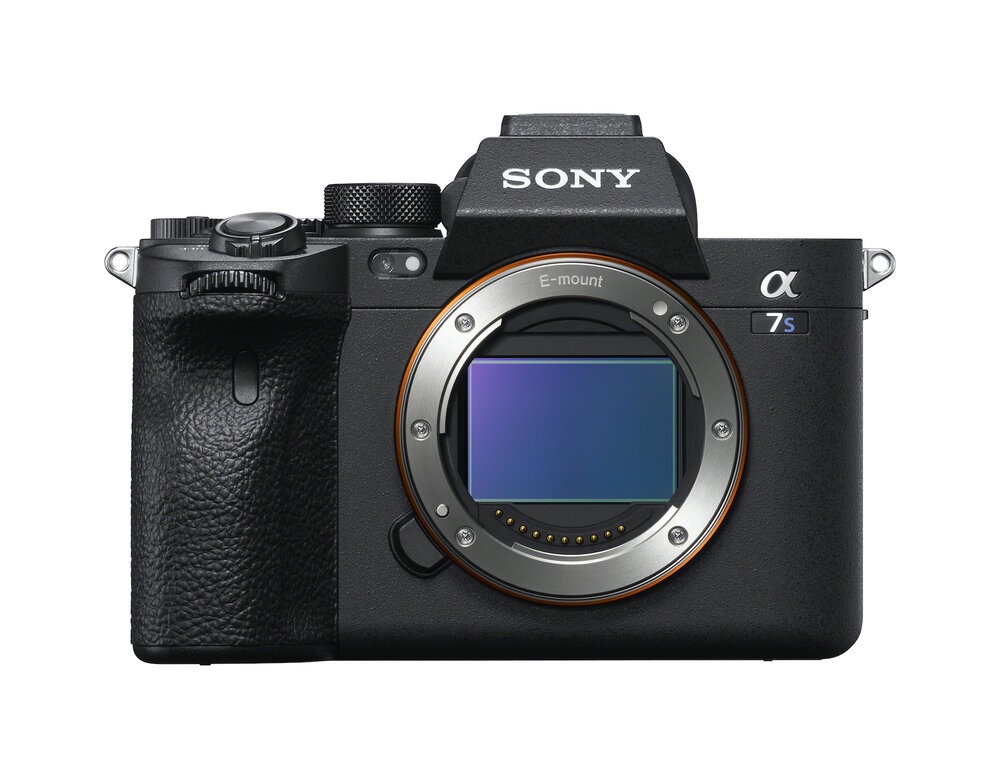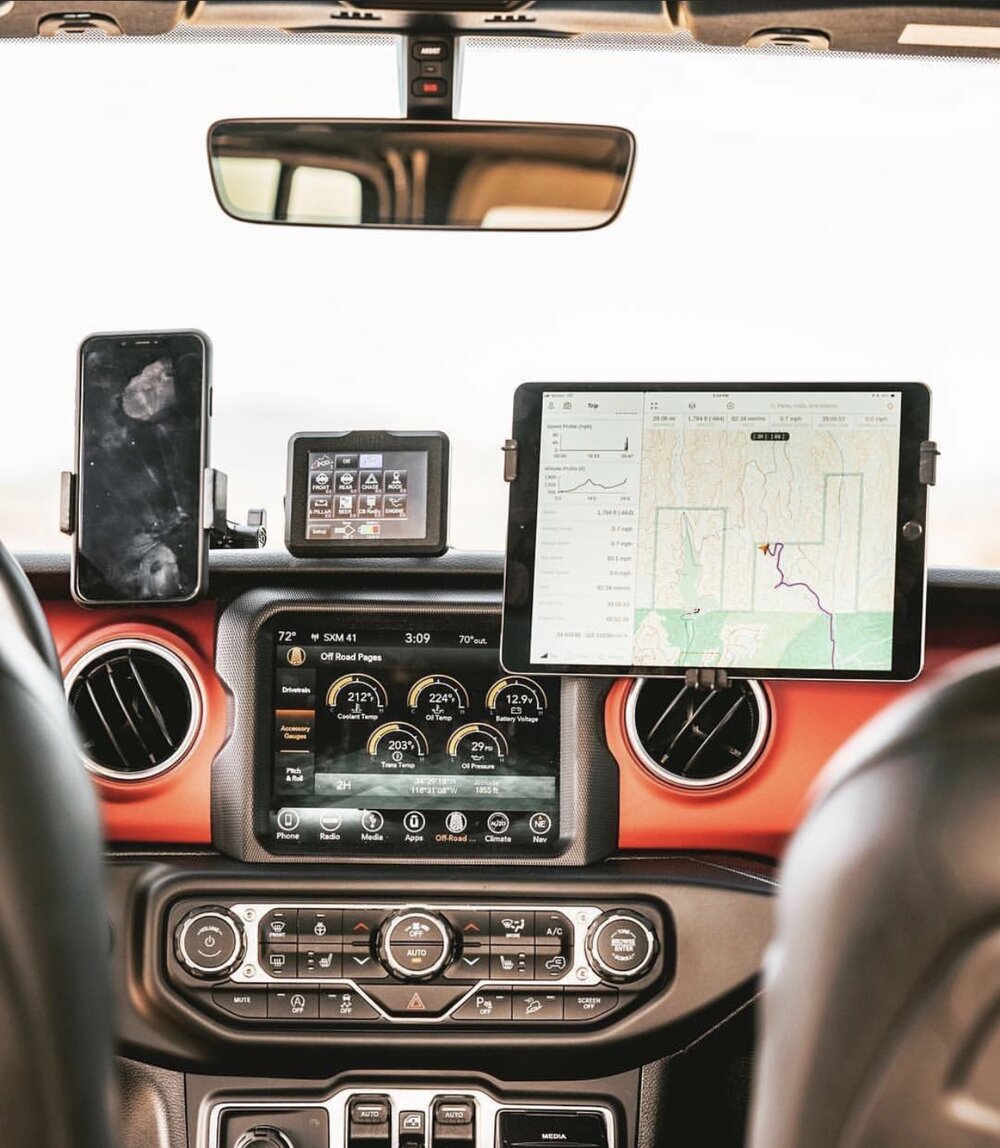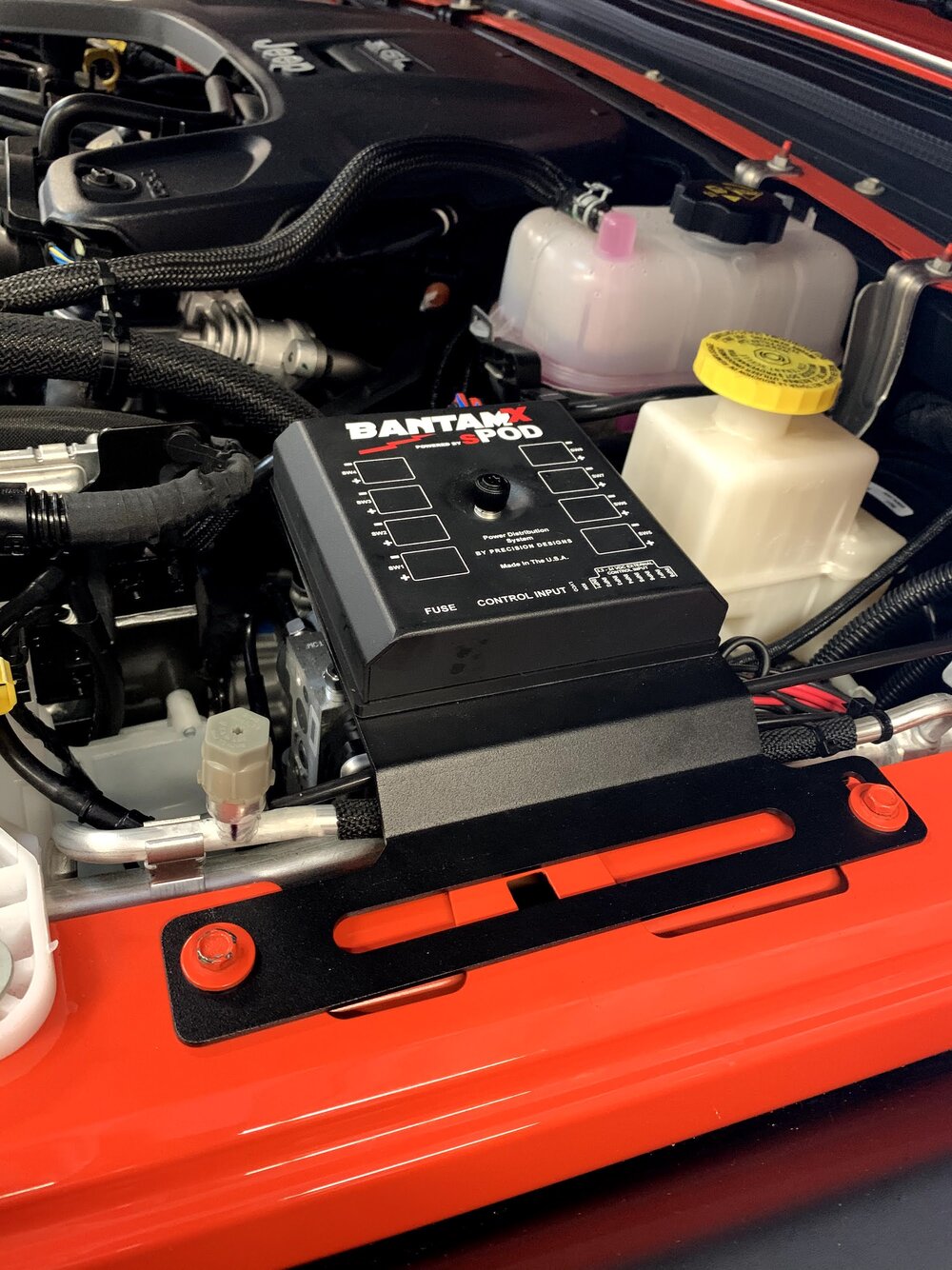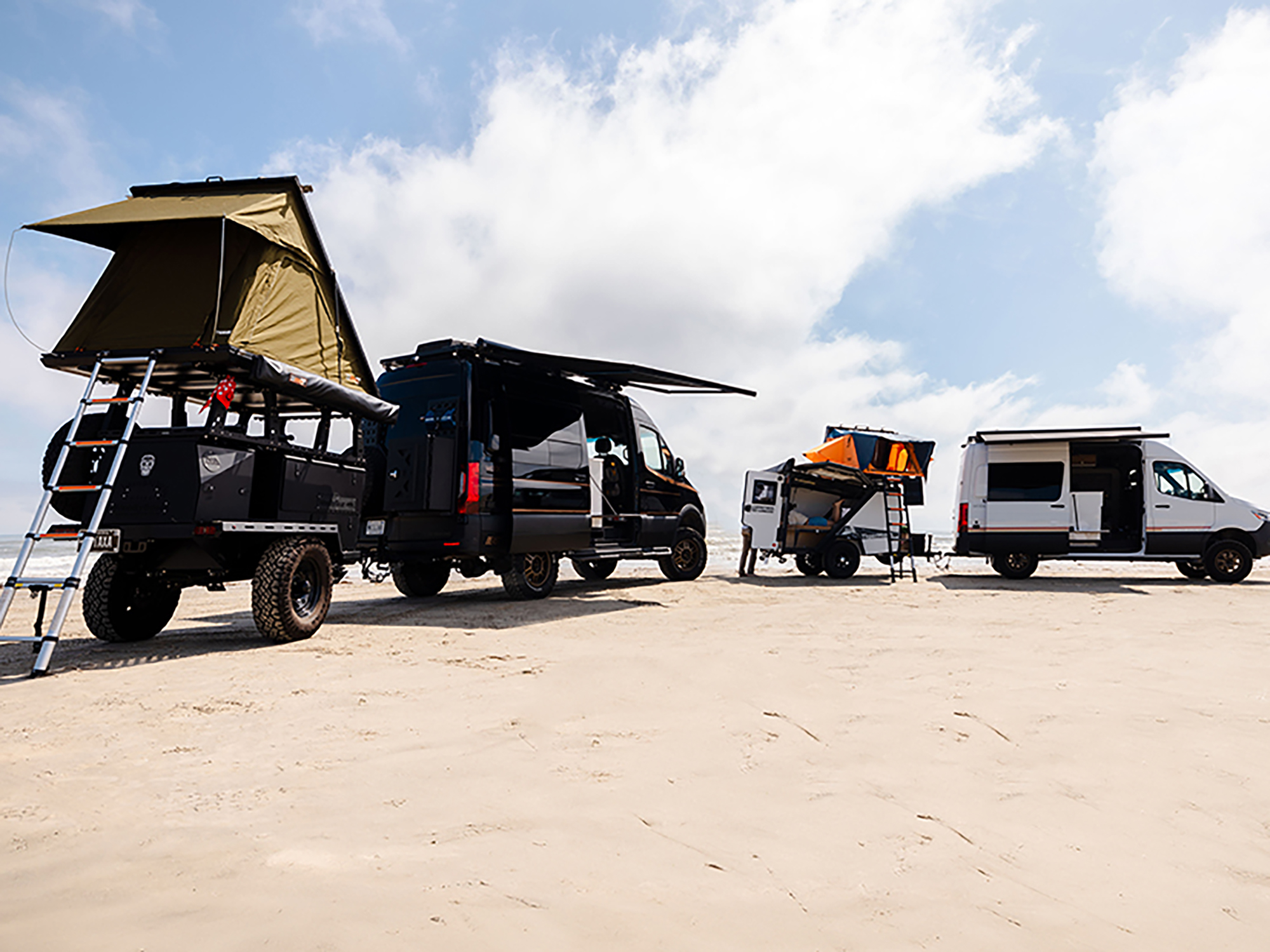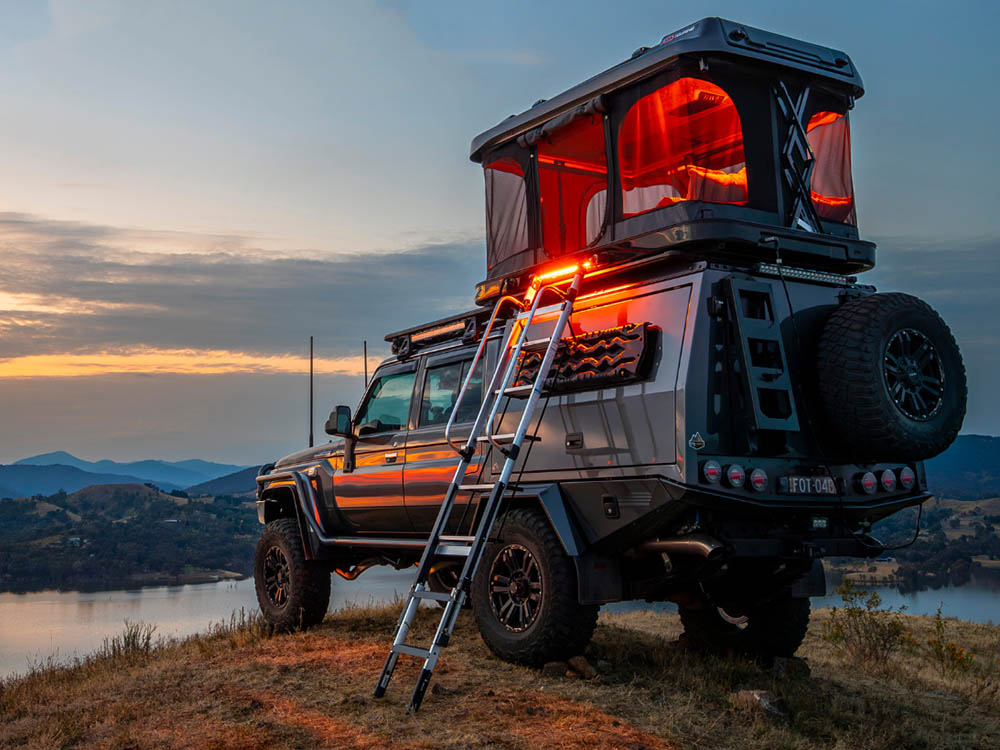Yes, almost everything is electronic these days. And a lot of our other Gear Essentials have featured electronic gadgets. This month, though, is dedicated solely to them. From the power systems that, well, power all your rig’s accessories to digital cameras to navigation apps to handheld GPS units to the equipment that secures them, we have it all.
Consider this month’s Essentials a veritable smörgåsbord of cool overlanding gear. Plan a trip, send updates from the trail, collect solar power, and capture high-quality 4K video along the way, October has it — and will help you — do it all.
Dometic — PLB40
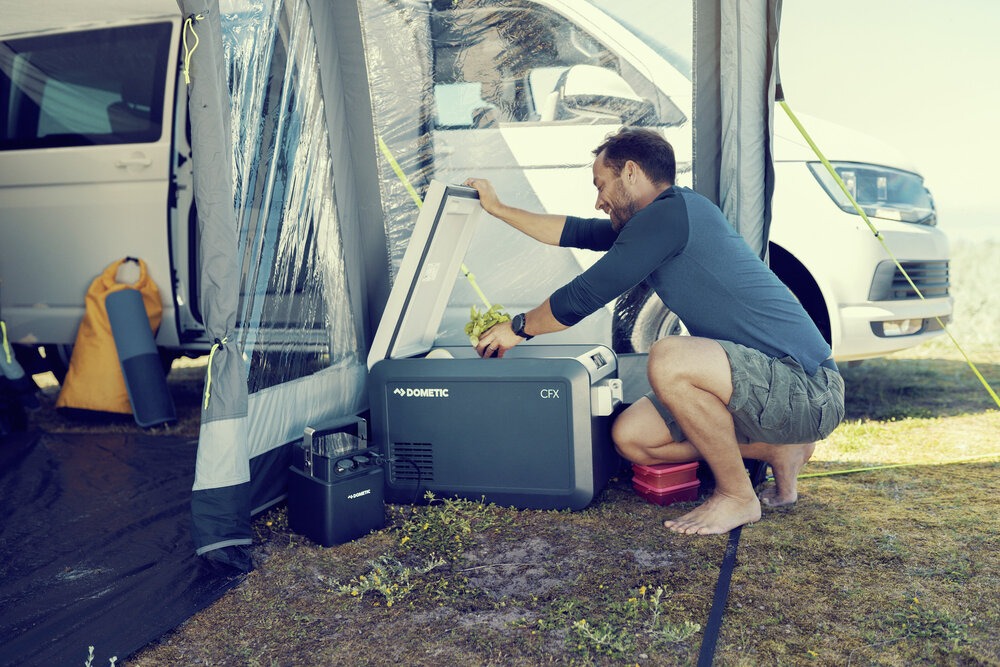
Photo: Dometic
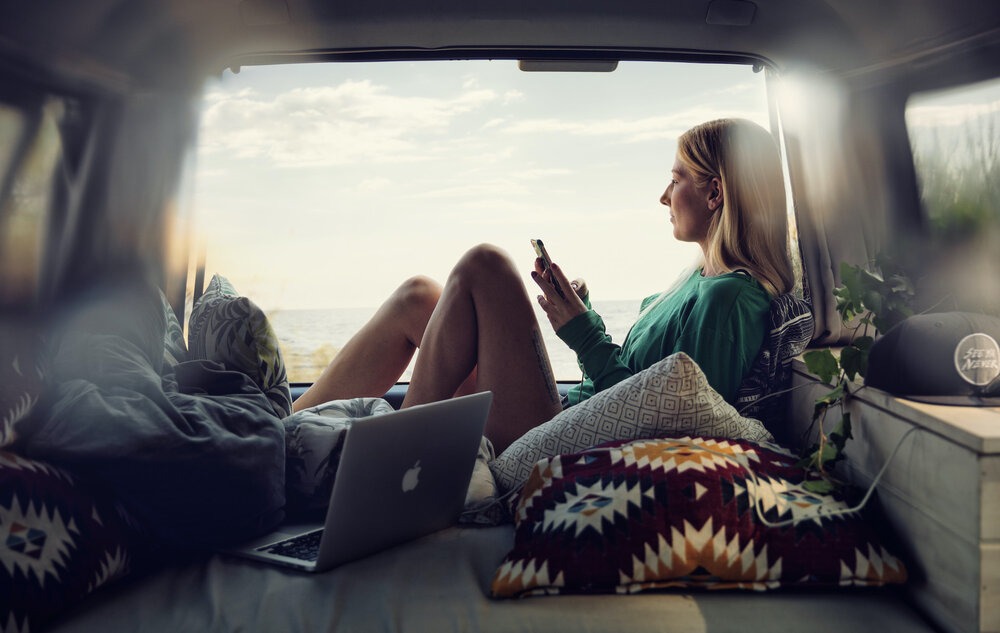
Photo: Dometic
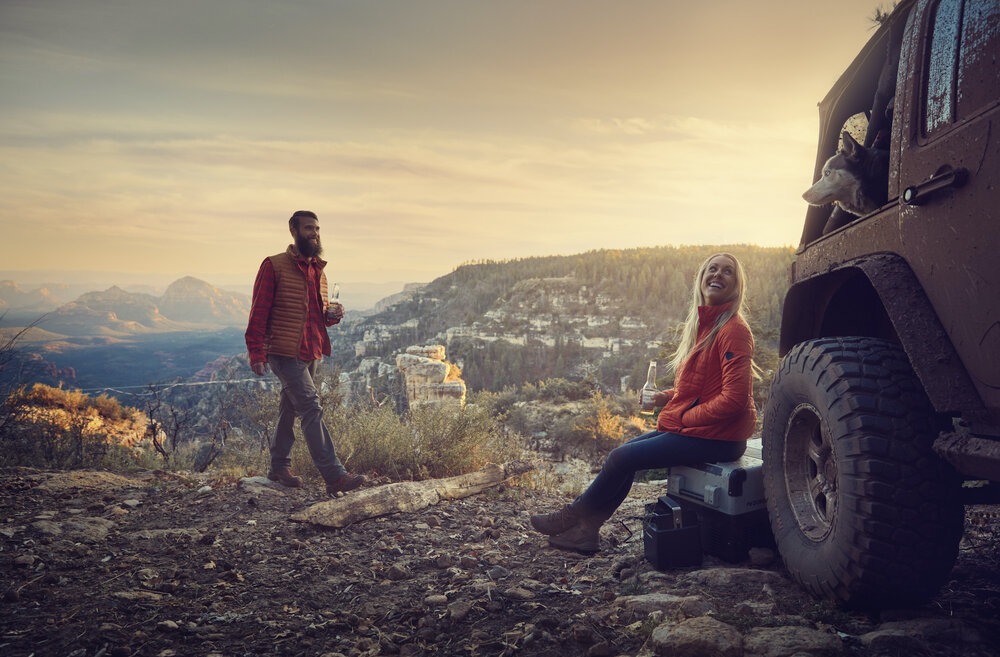
Photo: Dometic
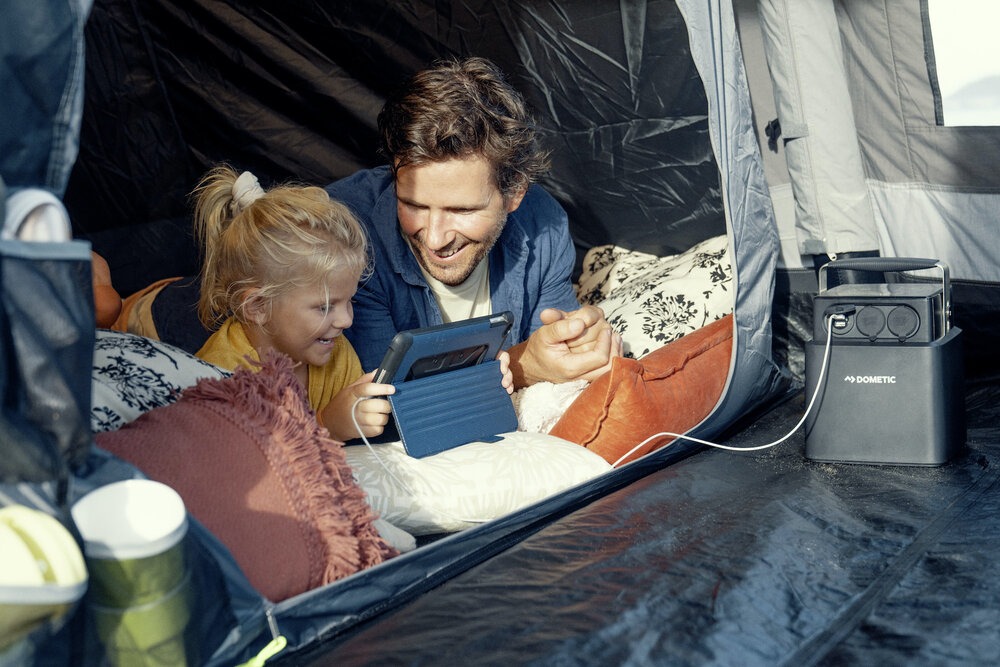
Photo: Dometic

Photo: Dometic
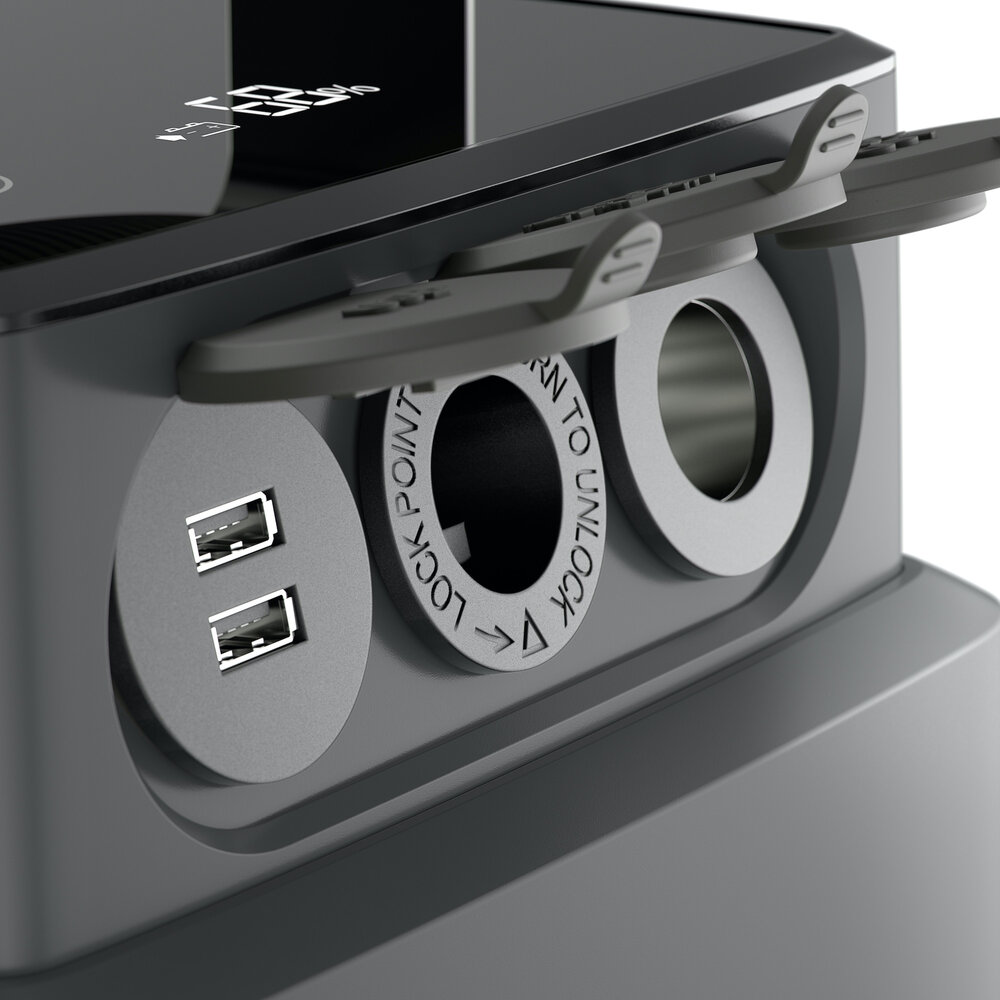
Photo: Dometic
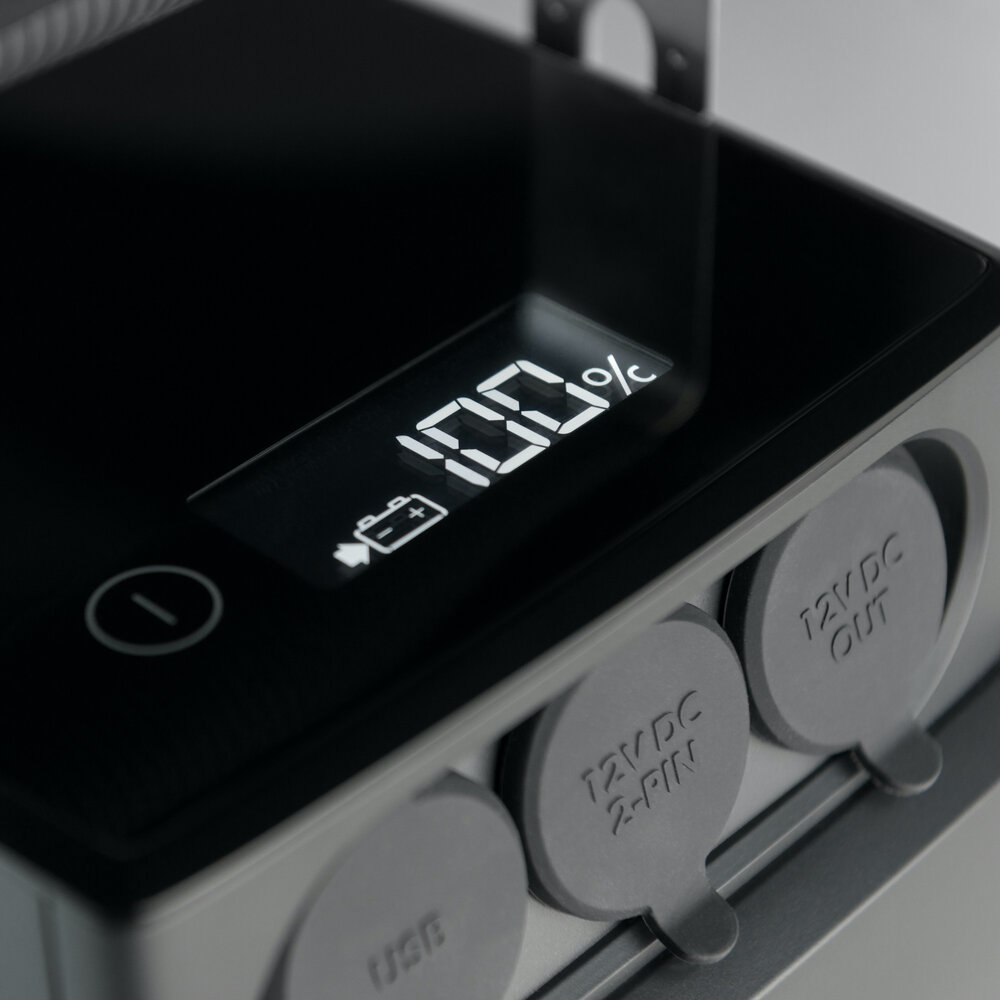
Photo: Dometic
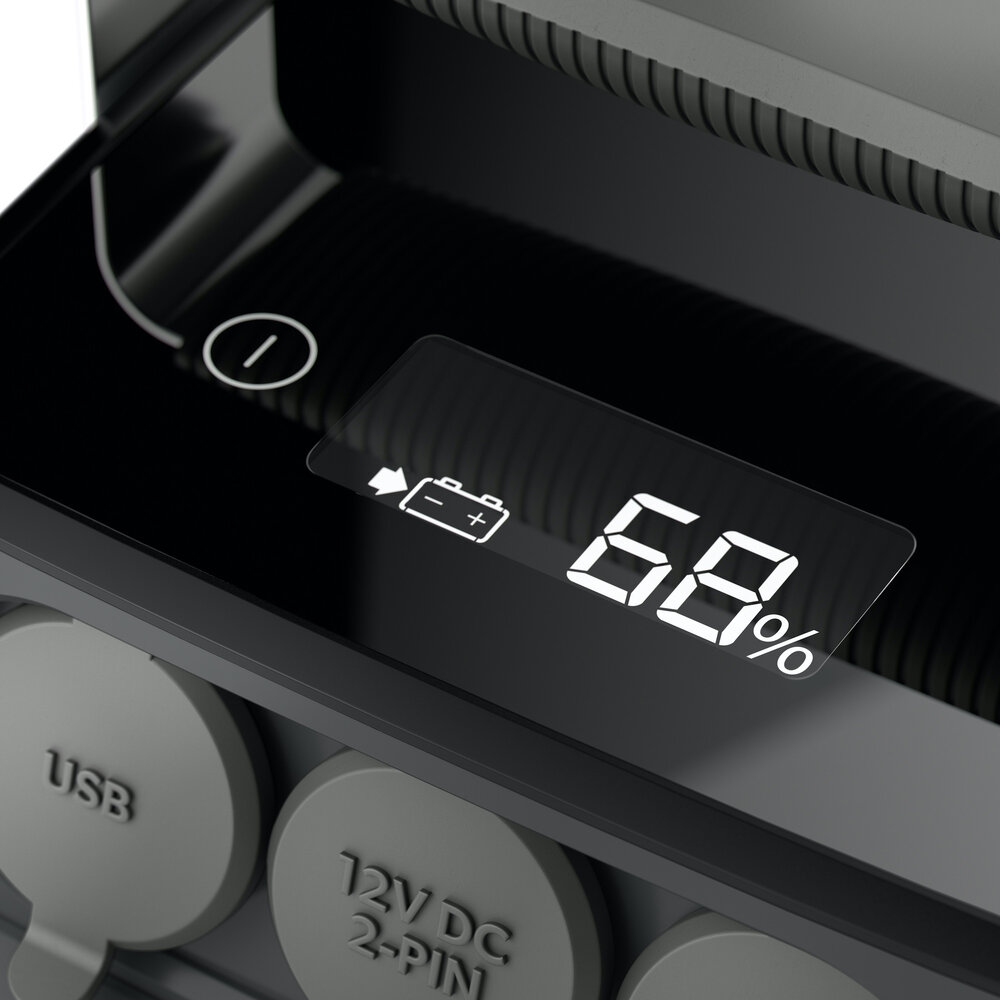
Photo: Dometic
Many of us look on with envy at the overlanders who run dual onboard battery systems. You know the ones. They effortlessly collect and store solar energy in onboard batteries that, in turn, power auxiliary accessories like fridges, freezers, and complex lighting systems. While a lot of us aim to some day get our vehicles to that level of complexity, it’s not necessarily in the cards.
Just because you’re not ready to fully outfit your rig with a heap of additional electronics doesn’t mean you can’t enjoy extended off-grid trips with a host of equipment that make life on the trail easier and more enjoyable — a fridge, for example.
Who among us wouldn’t want to carry a fridge on their overland journey if it didn’t require permanently installing one or rewriting their rig?
Dometic —global market leader in solutions for mobile living in the areas of food and beverage, climate, power and control, safety and security, and hygiene sanitation — has come up with a snazzy solution: the PLB40.
It’s a powerful, lightweight, and relatively compact portable battery designed expressly for the sizable subset of overlanders who want to utilize high-tech amenities without adding tons of permanent and complex wiring to their rig.
At the heart of the PLB40 are LiFePO4 lithium iron phosphate battery cells. They put out 512 Watt hours and 40 amp-hours of power. That’s enough to keep a Dometic CFX fridge running for a weekend or more.
It can operate from temperatures down to 32 degrees Fahrenheit and up to 122 degrees Fahrenheit.
Thanks to its onboard DC-DC charger, you can recharge the PLB40 from either a 12-volt DC outlet, like those in your rig, or from solar or a standard AC outlet in your home. The built-in and user-friendly LED screen allows you to monitor charge/discharge levels, power output stats, as well as battery capacity.
The Dometic PLB40 weighs just 16 pounds, so it’s relatively light weight. It’s easy to carry thanks to its integrated stainless steel handle. And it doesn’t take up much space, measuring a mere 7.76 inches deep, 10.02 inches tall, and 7.76 inches wide.
We love the PLB40 because it is not only from a well-known and well-respected brand but it’s also made to nicely compliment the brand’s lines of innovative overland products. What’s more, it is a simple solution for those of us who want to have world-class overlanding amenities without permanently installing them in our rig.
With the PLB40, you can bring along — and reliably power — your Dometic CFX-3 35 fridge on an extended overland journey. Then, when the trip is over, you can easily remove both from your rig thereby converting it from hardcore overland rig to daily driver without much fuss.
MSRP: $849.99
Garmin — inReach Mini
If you stroll through campgrounds at Overland Expo and peer inside the rigs as you walk by, you’re likely to see a little red device mounted to the dash or A-pillar of most of them. If you didn’t recognize it, it’s the Garmin inReach Mini. And there’s good reason most overlanders opt to have one running every time they venture out on an overland journey.
Not only is the inReach Mini an incredibly compact navigation tool, it could also save your life. Let us explain how.
The inReach Mini earns its moniker by being, well, mini. It is four inches tall, two inches wide and weighs just a scant 3.5 ounces on the scale. Despite its small size, it is capable of connecting to the Iridium network. With that connection, it enables users to send text messages, download aerial and topographic maps, U.S. NOAA charts, and receive optional weather alerts when paired with select handheld Garmin devices.
Moreover, the inReach Mini also features an SOS feature. Activate this and it connects you with GEOS, a 24/7 International Emergency Response Coordination Center. GEOS will take your exact location, alert your specified emergency contacts as well as dispatch appropriate emergency responders to your exact location.
While emergency responders are on the way, GEOS will be able to give you status updates through inReach Mini as well as alert responders to your situation.
A service subscription is required to use Garmin’s inReach Mini. However, Garmin offers month-to-month as well as annual options both for individuals and businesses.
That’s why we love the inReach Mini. It can play multiple roles. It can be a lifesaving standalone device, small enough to fit in your glovebox or backpack. It can also pair with other Garmin devices such as the Overlander to enable expanded services.
As most overlanders will attest, it’s a must-have for remote travel.
MSRP: $349.99 (plus subscription)
Garmin — Overlander
Overlanders are quite skilled at adapting gear and tools for their pastime. That is because, until fairly recently, not a lot of gear was designed specifically for overland travel. One of the first to change that fact and, frankly, start a trend was Garmin with its Overlander handheld navigation tool.
Delightfully, the Overlander is more than just a standard Garmin navigation unit beefed up for off-road travel. It’s effectively several tools and systems in one.
The Overlander features a bright and easy-to-use 7.0-inch touchscreen. From here, users can access the Overlander’s many features and apps. Its two primary apps are ‘Drive’ and ‘Explore.’
Drive is your typical turn-by-turn navigation app. Explore enables you to find points of interest (POI) and topographic features through a detailed topographic map. Once you find a spot you like, you can simply set as a waypoint, and choose to have the Drive app navigate you there — paved road or primitive unnamed road, Drive will get you there.
As Overland Expo staffer Nick Jaynes found when he tested the Overlander, it’s an essential tool for navigating and exploring far off the beaten path. While Google Maps will get you a lot of places, once it loses cell signal, it loses all utility. Since the Overlander has all its data onboard, it remains useful no matter where you go.
If, unlike Nick, you don’t want to simply wing it, the Overlander can help you there, too. Sync it with the Garmin Explore app, available for both smartphone and desktop, and you can import waypoints and pre-planned routes to you Overlander.
Plus, the pitch and roll and compass and barometer features keep you well informed throughout your journey.
What’s more, Overlander comes preloaded with the iOverlander app, which includes POI as well as Ultimate Public Campgrounds — another helpful tool that doesn’t require a cell signal. That means you can find the best-established, wild and dispersed campsites while deep in the wilderness.
Overlander also has 64 gigabytes of onboard storage. This gives users ample space to download additional maps, including satellite imagery.
Mounting the Overlander to your vehicle — either permanently or temporarily — is a cinch. The back of the unit features a magnetic and powered mount. You can easily mount that to your windshield or elsewhere on your rig with the provided suction cup or RAM ball mount. The integrated rechargeable battery enables you to use it while mounted inside your rig or handheld at your desk or campsite.
That’s why we love the Garmin Overlander. It takes a handful of tools, systems, and apps overlanders require and puts them into one handy and robust package. Plus, it’s from a brand we all know and trust — one that will be around for years to come with additional features and updates. So you can have the confidence in knowing that your investment in the Overlander is one that will pay dividends for years to come.
MSRP: $699.99
onX — Offroad App
One of the newest names in the off-road- and overlanding-focused map tools game is onX. It may be one of the relative newcomers, but it has grown both in popularity and utility incredibly quickly.
Originally built for hunters, the onX brand split its mapping tools off for off-roaders as well. Since it launched the iOS version of its Offroad app, it has become one of the go-to map tools for overlanders across the U.S. And there are good reasons why.
onX boasts 985 million acres of public land for overlanders to explore. Land is color coded to indicate private, Bureau of Land Management (BLM), National Forest, and others. Users can view the maps with satellite and topo filters or with a hybrid of the two.
Moreover, onX features 430,000 miles of motorized trails documented on its platform — with 20,000 additional miles being added each week. It also has 450,000 points of interest (POI). It can display localized weather. And some waypoints include photos.
The motorized trails can be filtered by vehicle type — from adventure motorcycle to ATV to high-clearance 4×4 to overland and more. The trails are color coded, too. Green means the trail is open. Red indicates it is temporarily closed. Blue is the latest color code. It’s reserved for “Featured” trails. These are backed by photos, descriptions, difficulty ratings, duration, history, and more — with more coming online each week.
Seeing a pattern? onX team members are making improvements and additions to the maps every week — not just annually. To that end, the onX team isn’t holed up in a Silicon Valley office using AI to troll the internet for data. They’re out there driving the trails and public lands in their own overland vehicles. That means they understand what an overlander wants and needs from a mapping app.
That’s why we love onX Offroad. Its founders saw a need and decided to fill it. The app is super useful when you’re out on an overland journey far off the grid. You can create an unlimited number of tracks, way points, and off-line maps. That means even when you’re miles from the nearest cell signal, you have all your trip data on your phone or tablet close at hand.
MSRP: $29.99 per year after seven-day free trial
RAM Mounts — X-GRIP PHONE MOUNT WITH LOW-PROFILE TOUGH-CLAW BASE
There are plenty of products available for attaching your smartphone or hand-held navigation device to your adventure motorcycle’s handlebars. Unlike its competitors, however, the RAM Mounts X-Grip mount with low-profile Tough-Claw base doesn’t obscure your phone beneath pads and plastic. That way, you can use it as intended — as a navigation tool.
Made from high-strength composite and stainless steel, X-Grip and Tough-Claw base feature a clever four-leg design and 360 degrees of rotation. That means your phone or hand-held device will remain both ideally positioned as well as securely attached to your handle bars. It can accommodate handlebars from 0.625 inches up to 1.5 inches.
The X-Grip can expand and contract to hold most smartphones, including Apple iPhone 6S, 7, 8, SE, X, XS, XR, and Blackberry DTEK 50, in addition to hand-held navigation tools that fall within 1.875 inches by 4.25 inches and 3.25 inches by 2.25 inches.
We love this RAM Mounts adventure moto setup because it is both versatile and strong. You can plunk your $1,000 smartphone into this grip and not worry that it’s going to vibrate loose and go flying after the 100th mile of washboard backroad. It will become an integral part of your overland journeys as the device it cradles.
MSRP: $66.99
REDARC – BCDC In-Vehicle Dual Battery Charger & 52mm Gauges
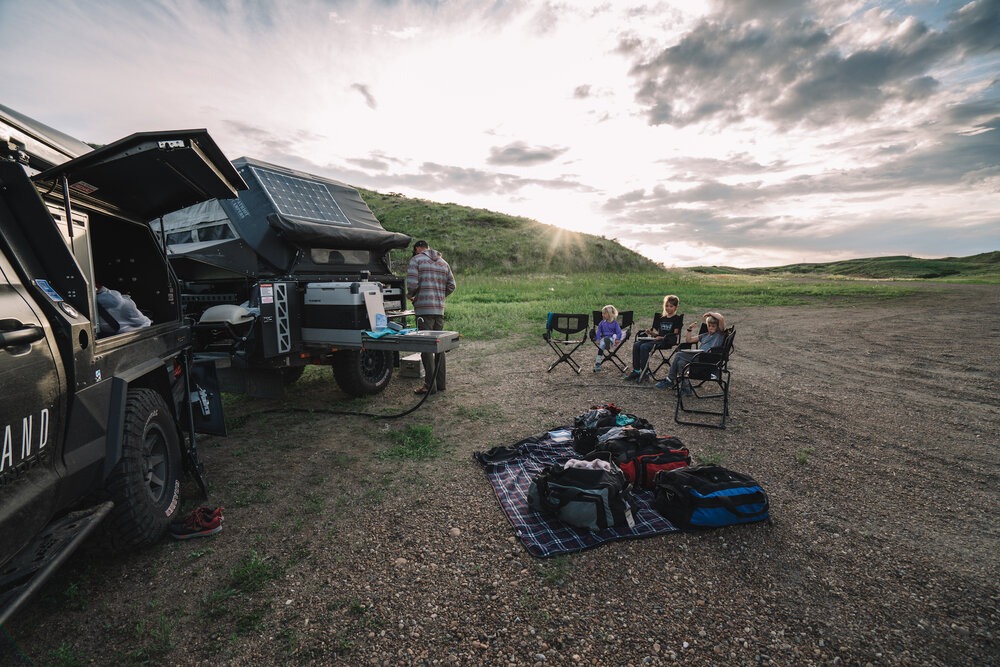
Photo: REDARC

Photo: REDARC
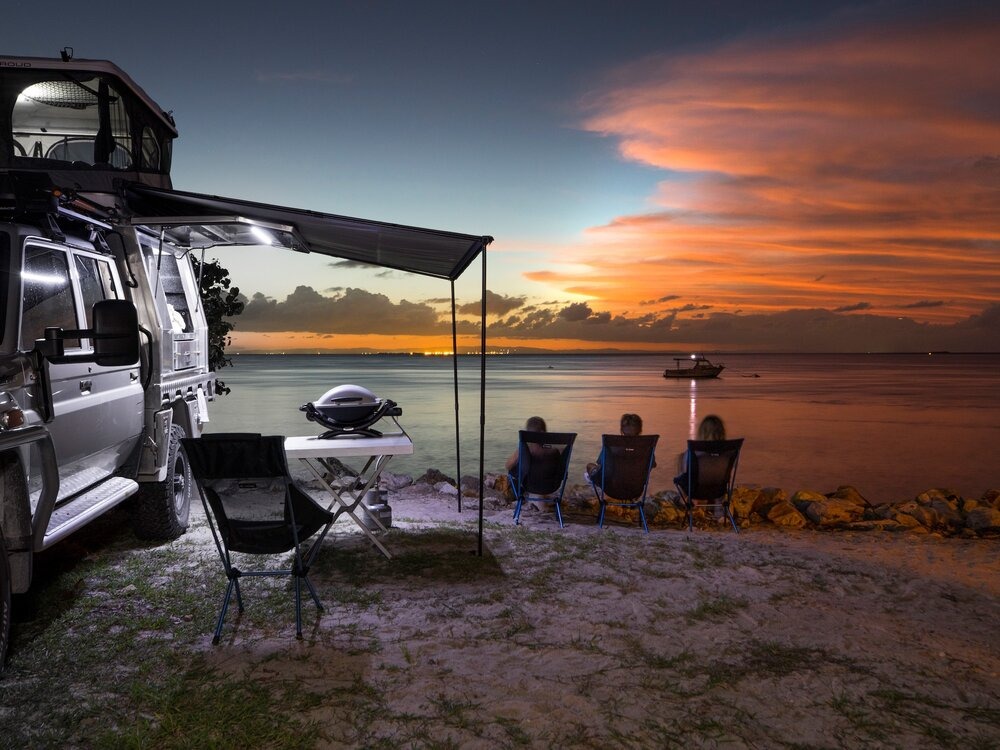
Photo: REDARC
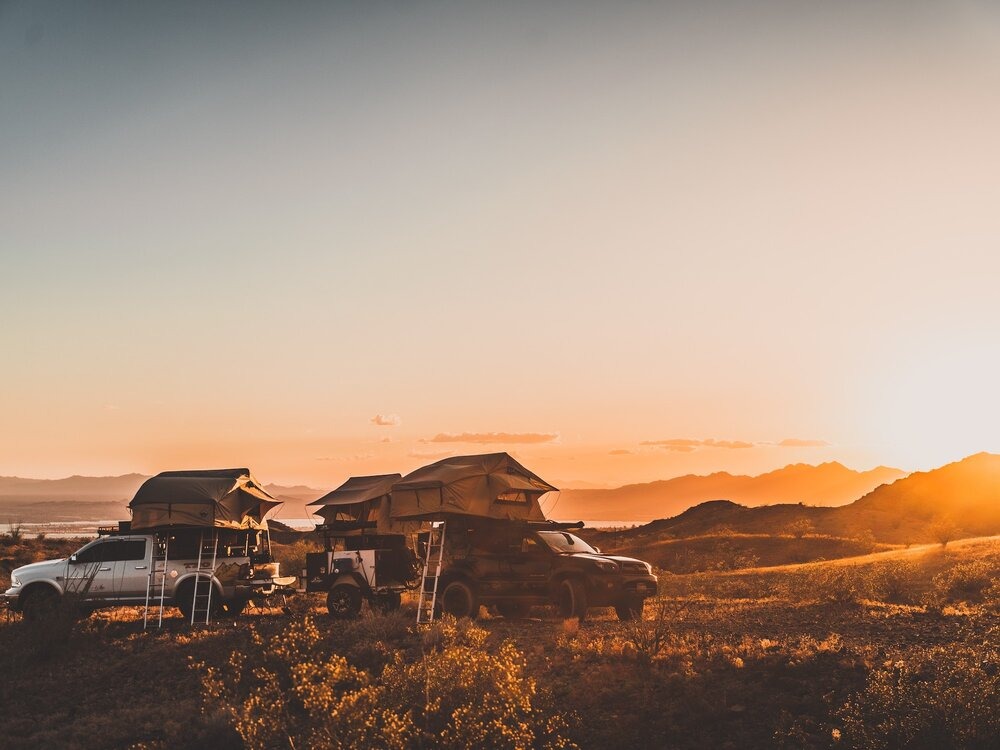
Photo: REDARC
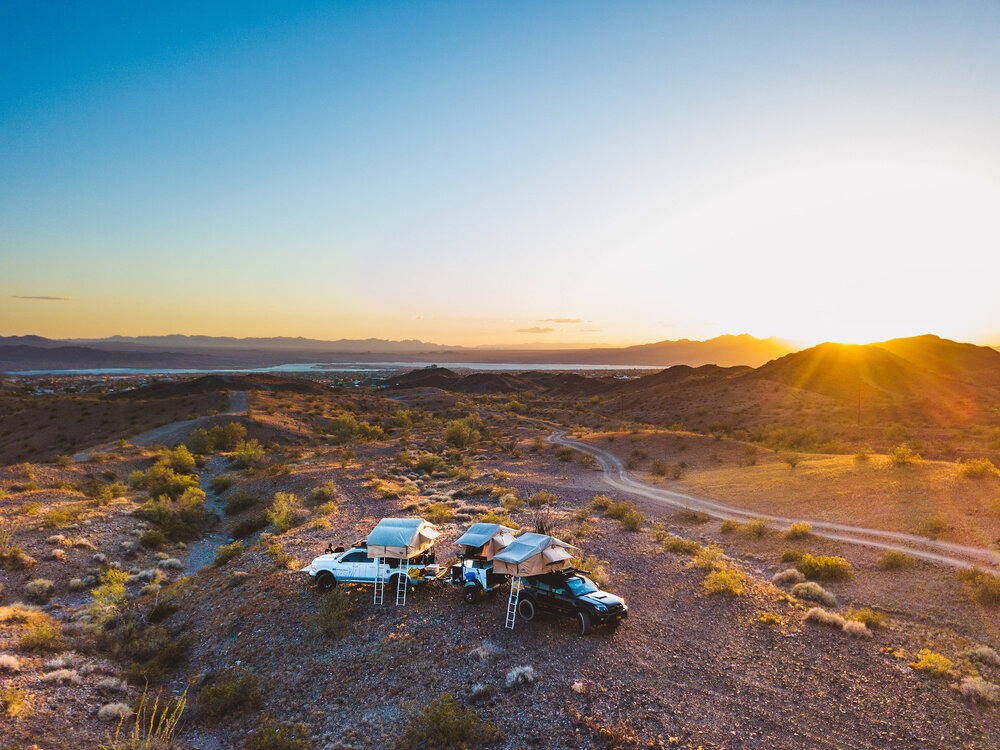
Photo: REDARC
Stepping up to a dual-battery setup? Then you’ll want to check out what Australian brand REDARC has to offer.
A global leader in dual-battery charging systems, REDARC builds all of its products to suit the harsh Australian environments. That means REDARC’s products can withstand — and, frankly, are at home — in water, dust, and extreme heat — up to 174 degrees Fahrenheit.
Take for example the brand’s BCDC charger and 52 millimeter gauges. Designed to work together, this pair of components is designed to make adding a dual-battery system to your overland rig simple and worry free.
Let’s start with the BCDC’s stature. It’s pretty compact. And it’s sealed and boasts fan-free cooling. Since it’s small and impervious to water, dust, and vibration, you can mount it in the engine bay, in the back of your rig or, heck, even outside it.
It supports a range of amperage and voltage variations, from 20 amps to 50 amps and 12- and 24-volt options. That enables users to draw energy from either solar or from the vehicle’s onboard alternator.
REDARC chargers are designed with a feature called Green Power Priority. This system will automatically draw first from eco-friendly solar power before drawing power from the alternator. So, you don’t have to worry about underutilizing your onboard solar array. The BCDC will worry about that part. It’s just that clever. And it’ll charge your second battery while you’re on the move up to the 100% full charge level.
To that end, the BCDC can charge all sorts of battery types, including AGM, gel, calcium content, URLA, or traditional lead-acid batteries.
The BCDC doesn’t come with an external battery monitoring system. That’s where REDARC’s 52mm (2.05 inches) gauges come into play. Pair a 52mm gauge with the BCDC and through the LCD/LED digital display monitor the charge levels of both the starter battery as well as the auxiliary battery. More than just monitoring, the 52mm will also send alerts for failures or an overcharged battery.
Surrounded by satin chrome bezel, the REDARD 52mm gauge pairs nicely with both vintage and late-model vehicles. And you can choose from one of 13 backlight colors to further tie into your rig’s color scheme.
That’s why we love REDARC and specifically its BCDC charge and 52mm gauges. There are many of us who want to step up to a dual-battery setup — one that’s going to be super easy to use and tough as nails — but without spending a ton of cash. Just because you don’t have a ton of money to spend on your overland rig doesn’t mean you shouldn’t be able to get out and off the grid with your favorite creature comforts in tow. And REDARC’s clever engineering and accessible pricing allows for both.
MSRP: $381.06 (12-volt, 25-amp model)
Sony — Alpha 7S III Full-Frame Mirrorless Camera
Now for something a bit different — a digital camera.
It seems most every overlander is a hobbyist content creator these days and/or part-time influencer. And why shouldn’t we be? We’re building the rigs and having the adventures most people dream of. So when you’re piloting your vehicle, either 4×4 or adventure moto, across some of the world’s most scenic vistas and witnessing the planet’s most gorgeous places, why not document it with both photo and video?
And if you’re going to create digital assets of your journeys, you are wise to use the latest and best tool for the task, the Sony Alpha 7S III.
Admittedly, we’re not camera experts. So, please excuse us if we miss a few vital details or specs of this world-class machine. We’ll try to hit the broader strokes as best we can, though.
The image-capturing majesty of Sony’s new A7S III starts with its 12.1 ML backside illuminated full-frame sensor with two times the readout speed. This is how it is capable of ultra-clean low-light images. And, if you’re anything like us, you’re constantly stepping away from the fire at camp on your journeys to snap some astrophotography. So, this camera may become your new best friend. The A7S III is capable of ISO up to 409,000 with 15-plus stops across its dynamic range. Plus it boasts three times reduction of rolling shutter.
It has a new hybrid autofocus (AF) with 759 phase detection AF points. While rolling video, for example, you can tap a portion of the image on the foldout three-inch screen to effect a rack focus while recording. This is an incredibly cool — and useful — feature, if you get a chance you check it out.
Speaking of video, The A7S III can record up to 120P 4K 10-bit 4:2:2 video. And it can do an hour of continuous 4K video recording at 60P. We challenge you to try that on another camera without overheating it. It also includes two card slots, so you have ample space for capturing your overland imagery.
A7S III also introduces Sony’s new menu system, which is more user friendly and intuitive than before. Flip through and you’ll discover that the camera is capable of high-speed FTP transfer over either 2.4 or 5GhZ Wi-Fi.
We love the Sony A7S III not least because its new magnesium body is both robust and also class-leading in both size and weight. No, we love it because it’s the perfect tool for documenting your overland journeys and sharing the assets with the world. Just as Overland Expo wants to help overlanders “get outfitted, get trained, get inspired, get going,” we hope our fans will as well. And that starts with sharing inspiring photos and videos. And there’s no better way to create and capture those than with Sony’s Alpha 7S III.
MSRP: $3,499.99
sPOD — BantamX with Touchscreen
The sPOD brand boasts that its products are both trail rated and race proven. Based upon the kinds of conditions their products have endured, we totally believe them.
This month, we’re highlighting the BantamX with Touchscreen. It’s a fully programmable, digital control system for your auxiliary power accessories. It can operate on 12 or 24 volts DC power. It features eight circuits rated at 30 amps at 12.5 volts DC per circuit. So you can run a lot of extras off this thing.
What makes the BantamX distinctive, aside from its quick two-hour installation time, are its safety features. It has an integrated low-voltage cutoff (LVCO) battery protection with optional override. There’s a failsafe self-healing fault protection system rated from 1.5 to 30 amps. What’s more, and almost shockingly, the system has no fuses or relays to worry about. And its battery cables are braided nylon and high-strand cross-linked copper wire with a silicone jacket. That means it’s both flexible and durable.
Protection against overheating, over-current, shorts, reverse polarity, and field collapse are all designed into the system. Plus, you can add on the optional Ignition control and safety lock out for switches one and two.
Delightfully, it’s as easy to use as it is powerful. There’s built-in Bluetooth. And software upgrades are wireless and on-demand.
The touchscreen, too, is super user-friendly. On it you can monitor the amp meter that shows the power draw of each accessory. Board temperature is also available at a quick glance.
Perhaps best of all, the sPOD’s BantamX includes an automatic power-off feature. After six hours of being inactive or engine not running, it’ll automatically go into a deep-sleep mode.
If it’s not clear why we love the BantamX, let’s recap. It’s easy to use and easy to install. It’s powerful, and ingenious in its design — both in terms of versatility, functionality, and safety. And it’s made right in the USA by people who know, understand, and love off-road and overland vehicles.
MSRP: $915.00
OFF GRID GEAR 2 GO — SPOT X
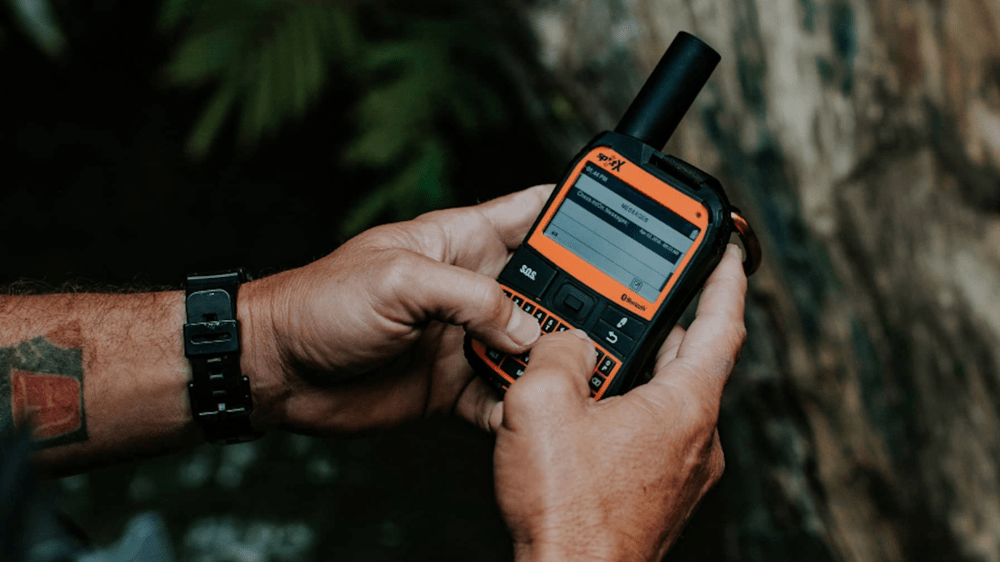
Photo: OFF GRID GEAR 2 GO
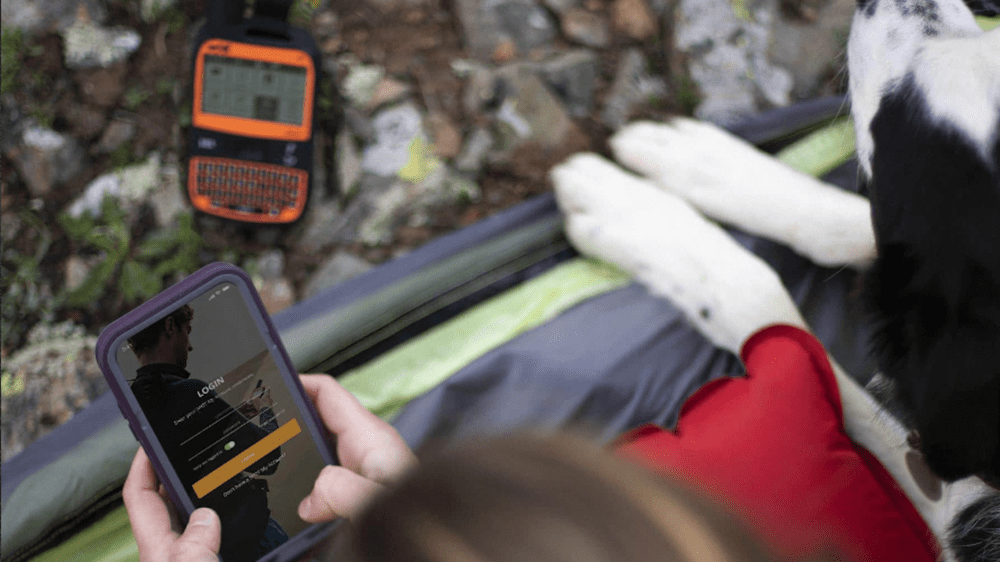
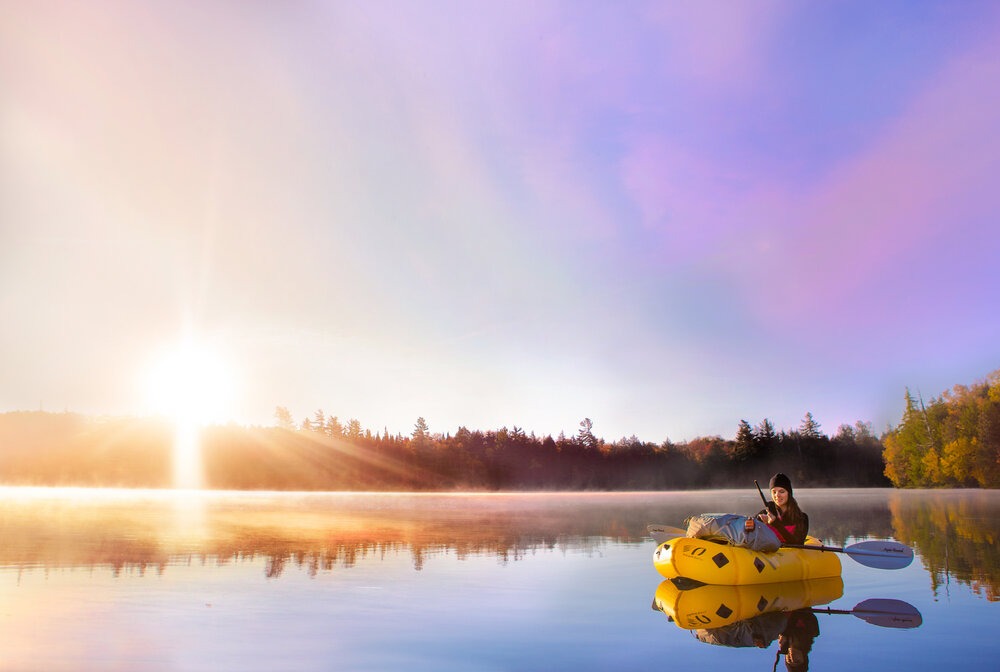
Photo: OFF GRID GEAR 2 GO
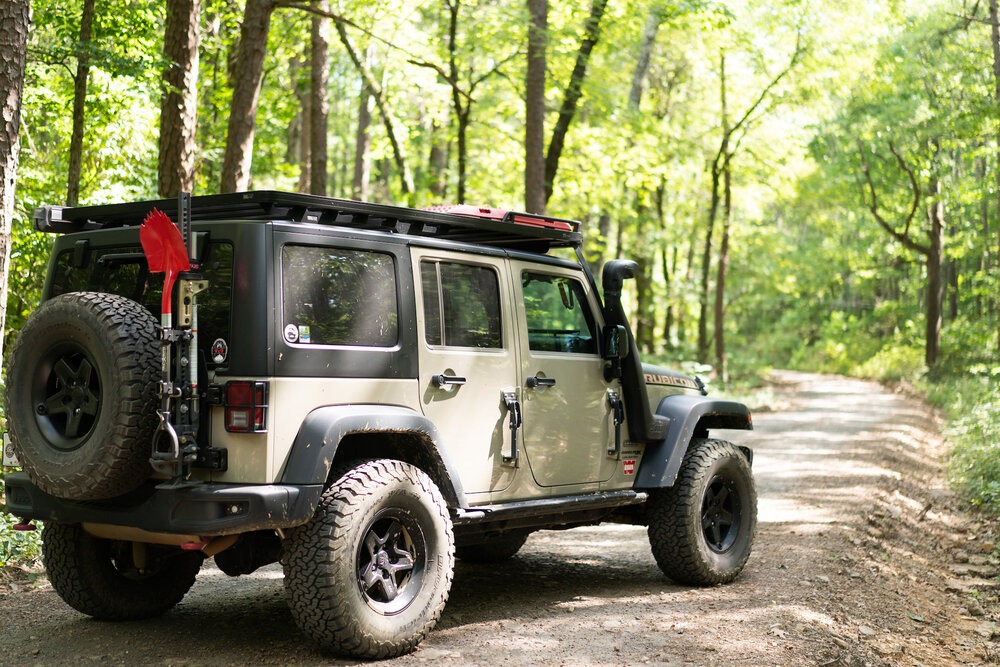
Photo: OFF GRID GEAR 2 GO
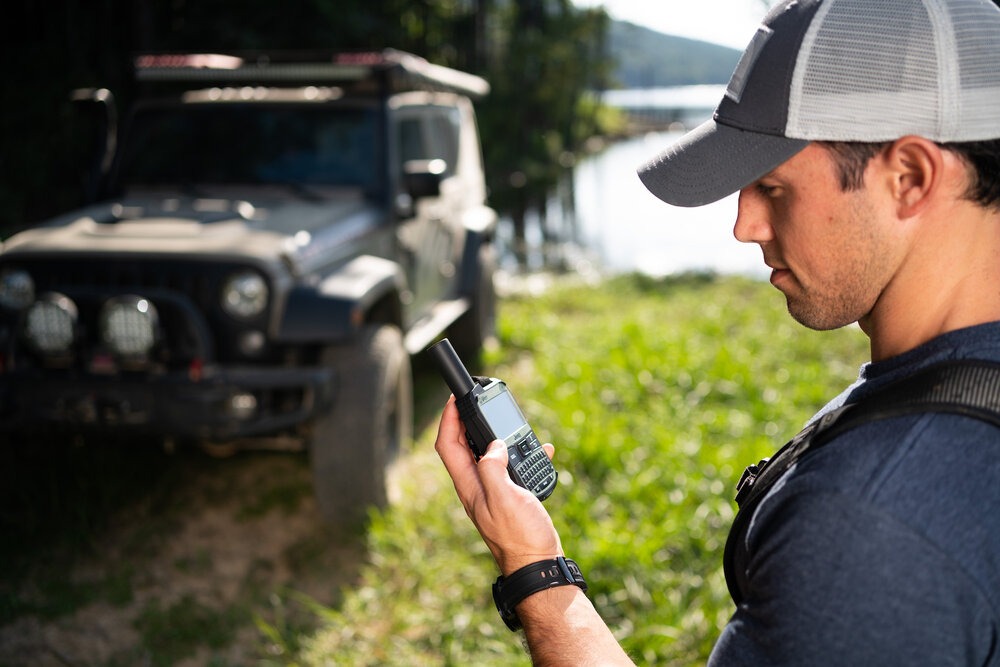
Photo: OFF GRID GEAR 2 GO
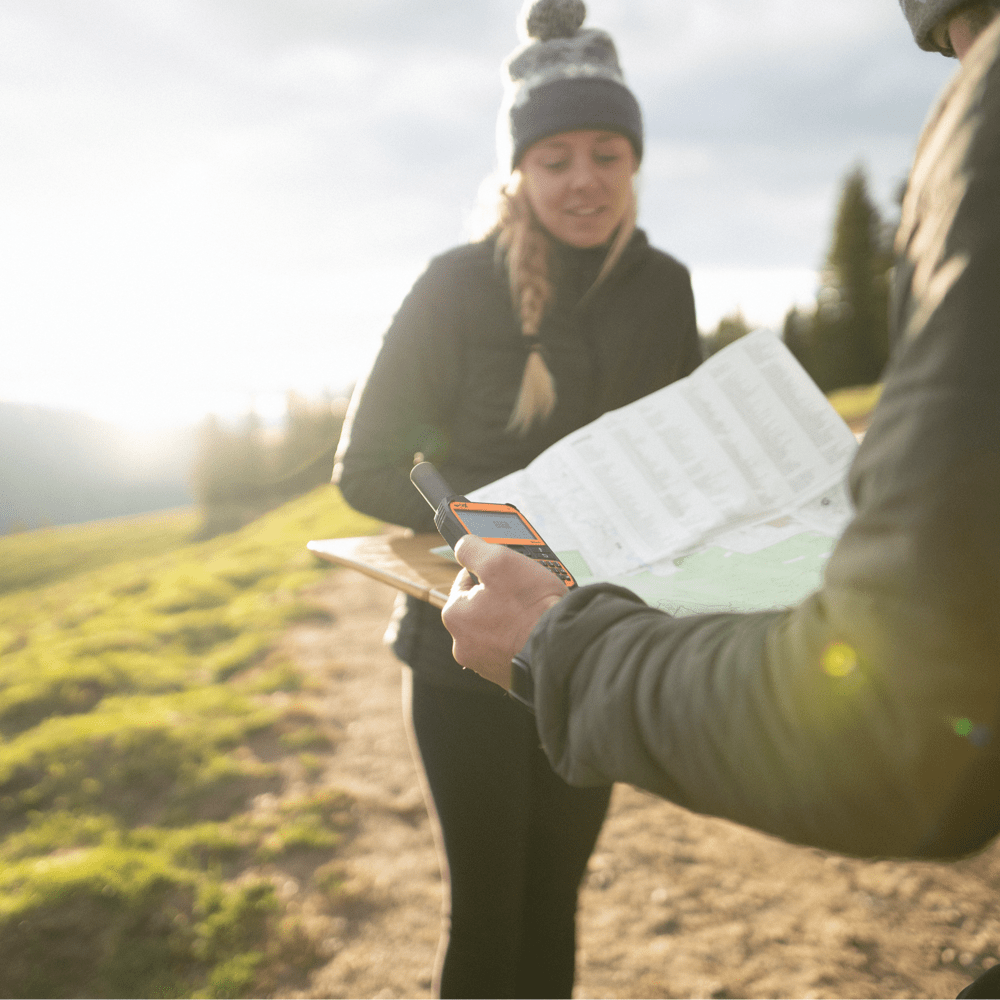
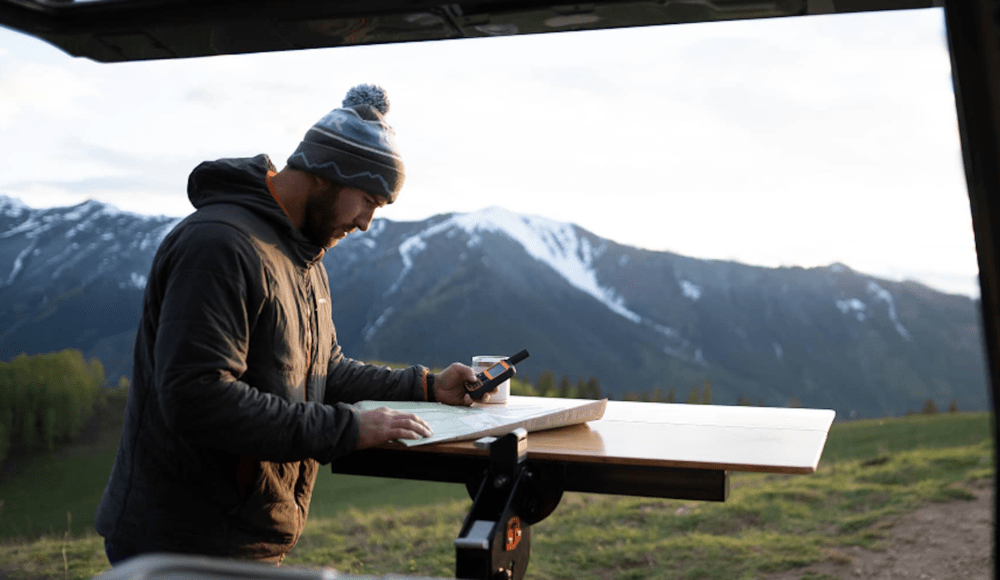
Photo: OFF GRID GEAR 2 GO
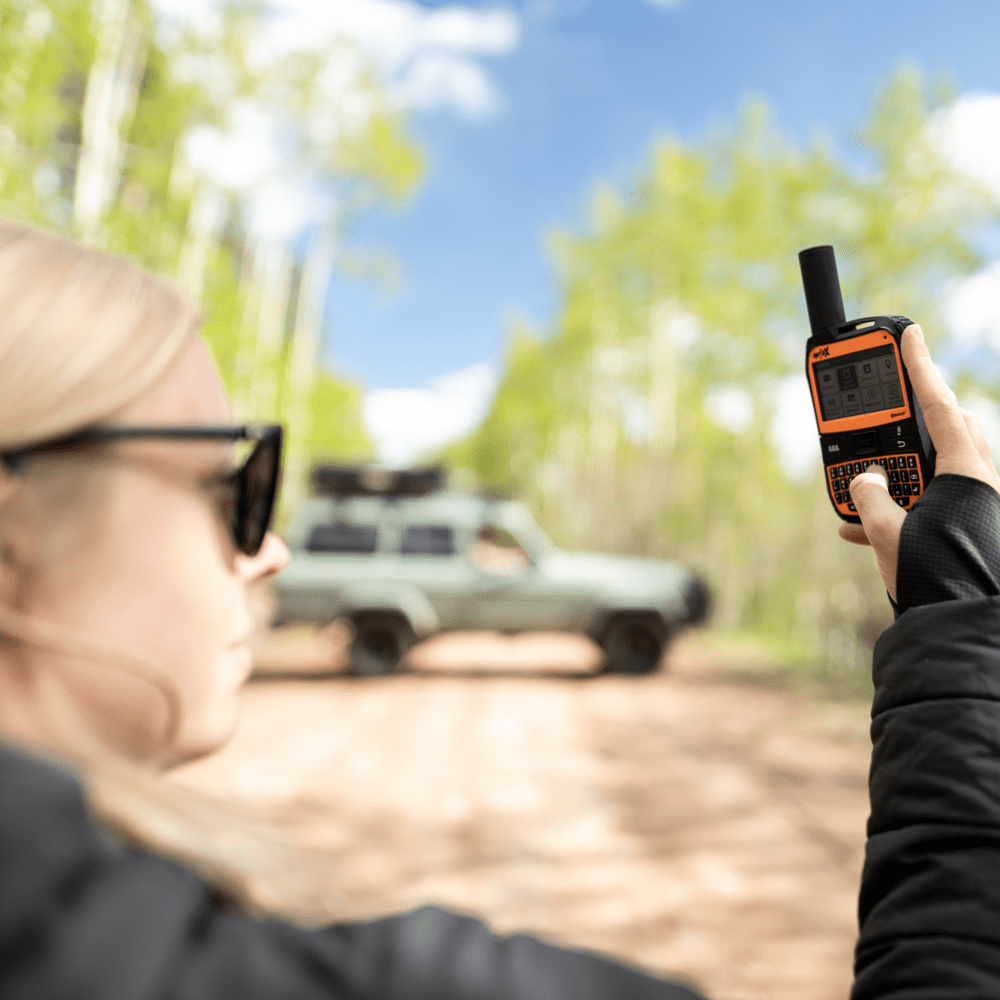
Going off-grid is essential to what we do. It’s part of the thrill, right? What would overlanding be if we weren’t pushing the boundaries of our own capabilities?
Just because you love being out of cell service and far away from civilization for days and weeks on end doesn’t mean that your loved ones relish it quite the same — whether they’re with you on the journey or back home.
To support both the overlanders who want a bit of a safety lifeline and their friends and family that enjoy a regular check-in, OFF GRID GEAR 2 GO offers the SPOT X — a handheld GPS device.
SPOT X’s most critical feature is its SOS function. However, it packs a lot more into its compact case. It has a built-in compass with programmable waypoints. It is Bluetooth enabled, so you can pair it with other Bluetooth devices, like a smartphone, to utilize the SPOT X app. You can send two-way satellite messages with it through its dedicated U.S. mobile number. And you can also send “OK” with a push of a button to pre-set contacts.
For those who want to do more than stay in touch and stay safe, SPOT X also allows you to track your journey so that you can share your adventures later with other overlanders.
We love SPOT X because it is more than just a flash-in-the-pan product — people actually use it. OFF GRID GEAR 2 GO can proudly say SPOT X has facilitated 7,324 rescues and counting.
MSRP: $249.99
Trails Offroad — All-Access Membership
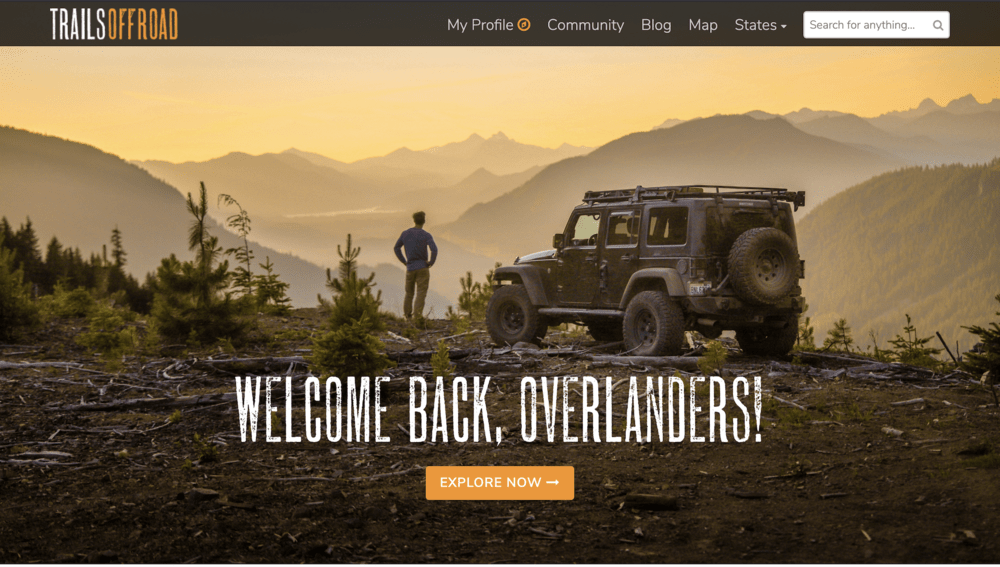
Photo: Trails Offroad

Photo: Trails Offroad
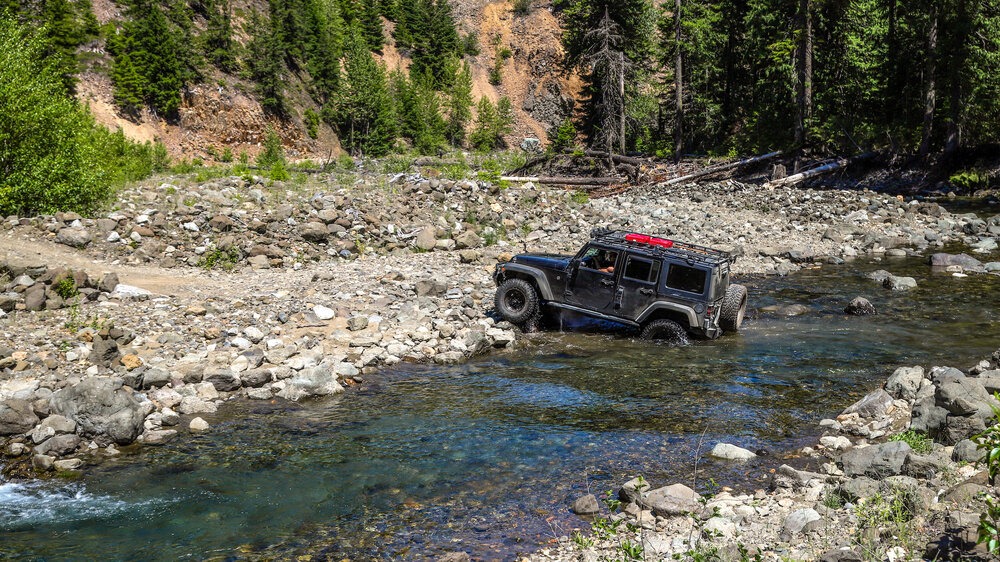
Photo: Trails Offroad
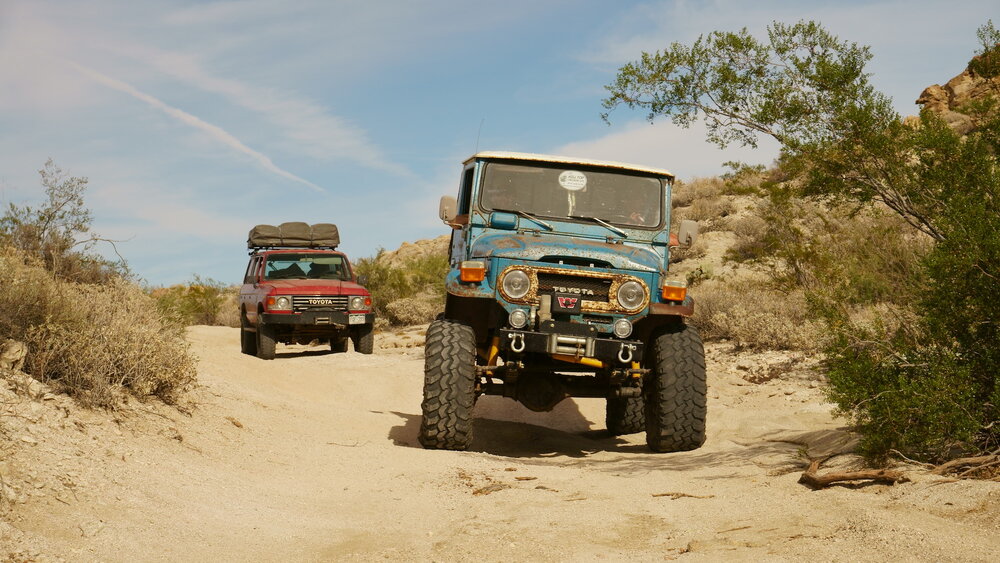
Photo: Trails Offroad
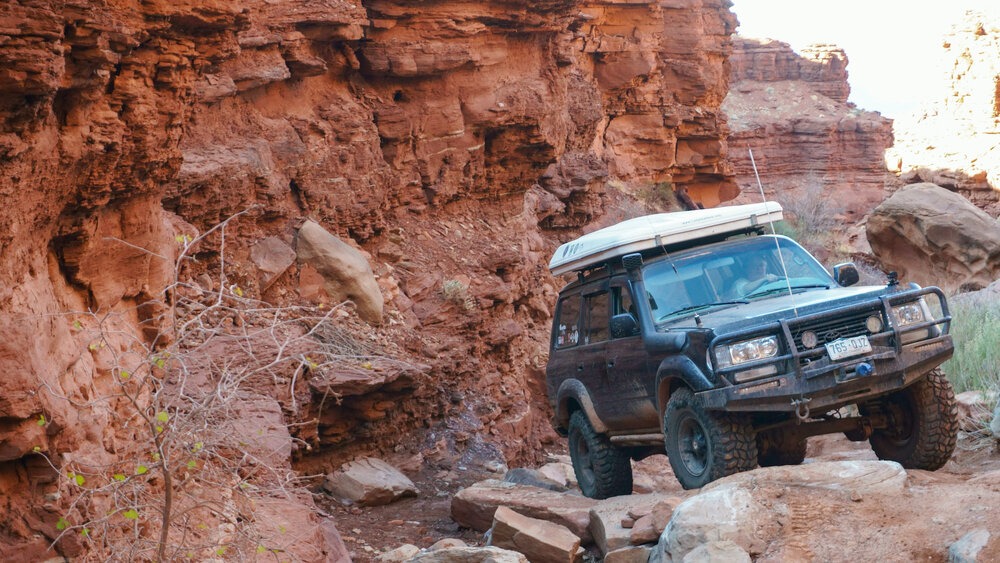
Photo: Trails Offroad
How many of you are using the free version of a bunch of navigation apps? Quite a few, we expect. While those limited, free versions can be well and good for those who get out and explore semi-annually, it’s not advisable for regular overland travelers to try to get by on a scant slice of information. You wouldn’t run free motor oil in your rig’s engine. So why would you want to try to plan and navigate along your adventures the same way?
This is why we’re recommending you step up and pull the trigger on Trails Offroad’s All-Access Membership. For a nominal $25 per year, you get access to a ton of trails and other information.
Here’s just a taste of what you get: Maps with tracks color coded by difficulty backed by an advanced trail rating system that expressly indicates a trails difficulty level; detailed route descriptions; all the waypoints Trails Offroad has in its database; GPX files with meaningful waypoints, including obstacles, campsites, and historical POI; and advanced search capabilities.
We really like it because it’s a great navigational tool for deciding not only where you’re going to go and how you’re going to get there but what you can see along the way. What’s more, it helps avoid — or veer toward, if you’re feeling daring — difficult tracks laden with obstacles. Admittedly, some of us love a good off-road trail. Not all of us do. The Trails Offroad team knows that and they work to keep you fully informed so you know what you’re getting into.
And that’s why we love it. The team and community gets overlanding and they’re there to help. With the All-Access Membership, you can send a direct message to the author of a guide and ask questions. That way, you can rest assured that you won’t be caught off guard and that your overland journey will be both successful and one for the books.
MSRP: $25 annual membership
Header image credit: Garmin
